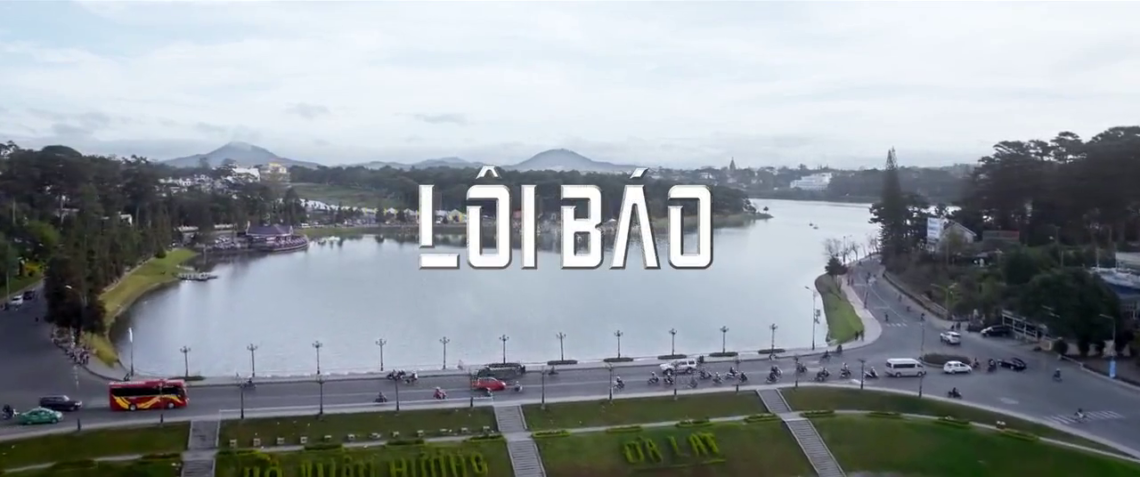-
#526 – Sonic the Hedgehog (2022)
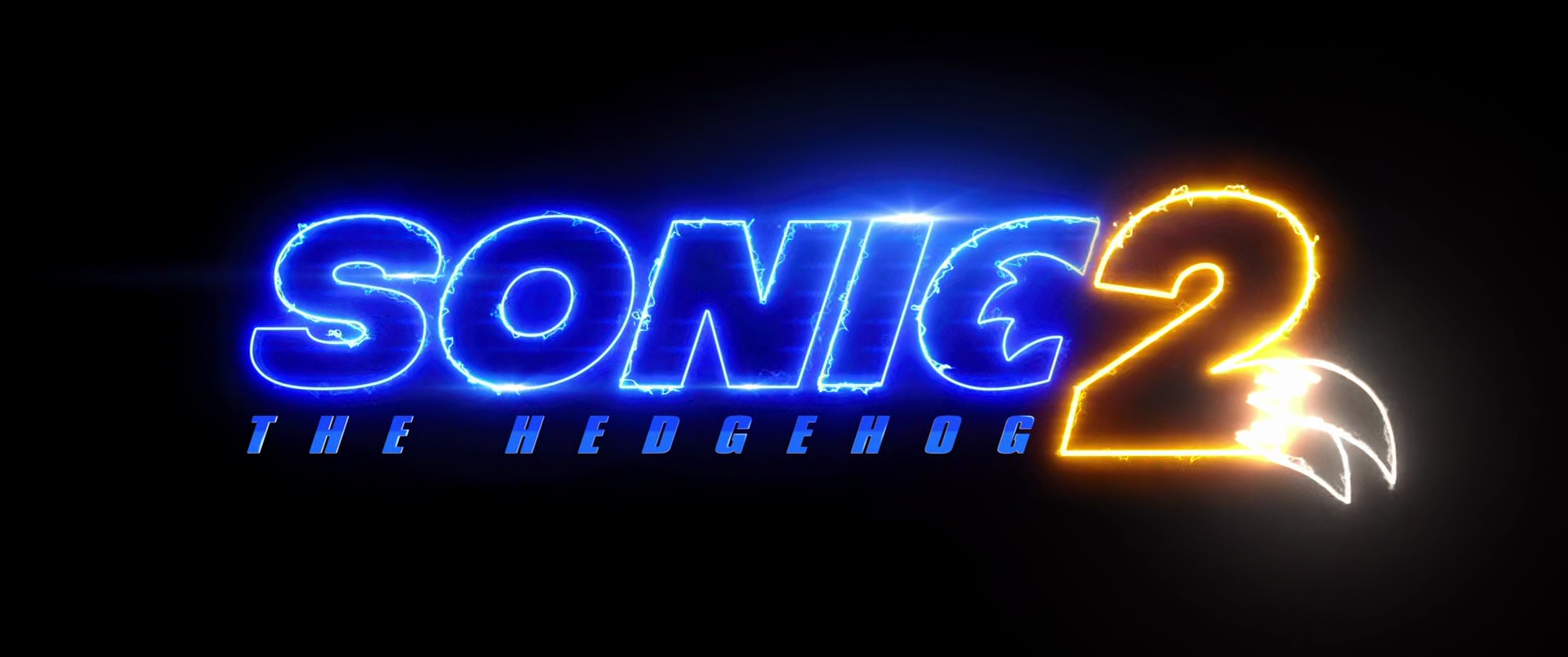

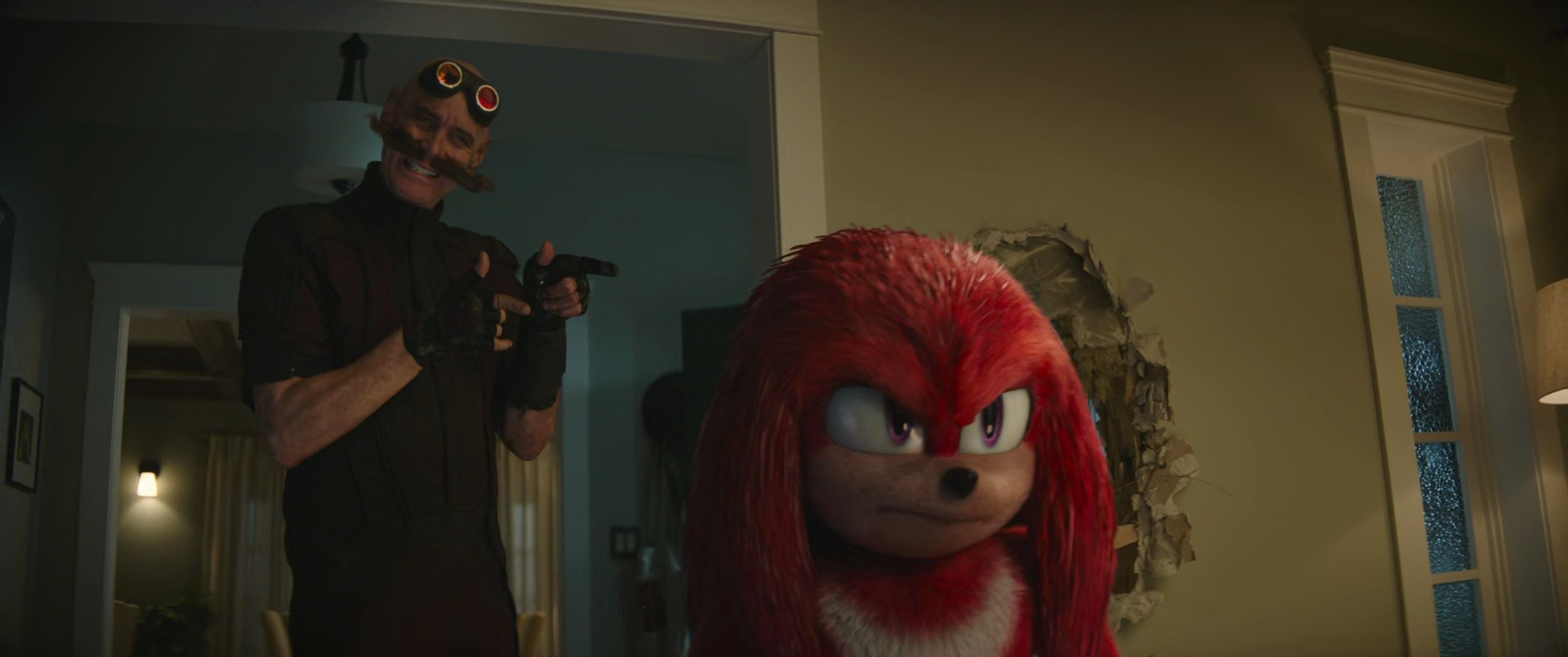
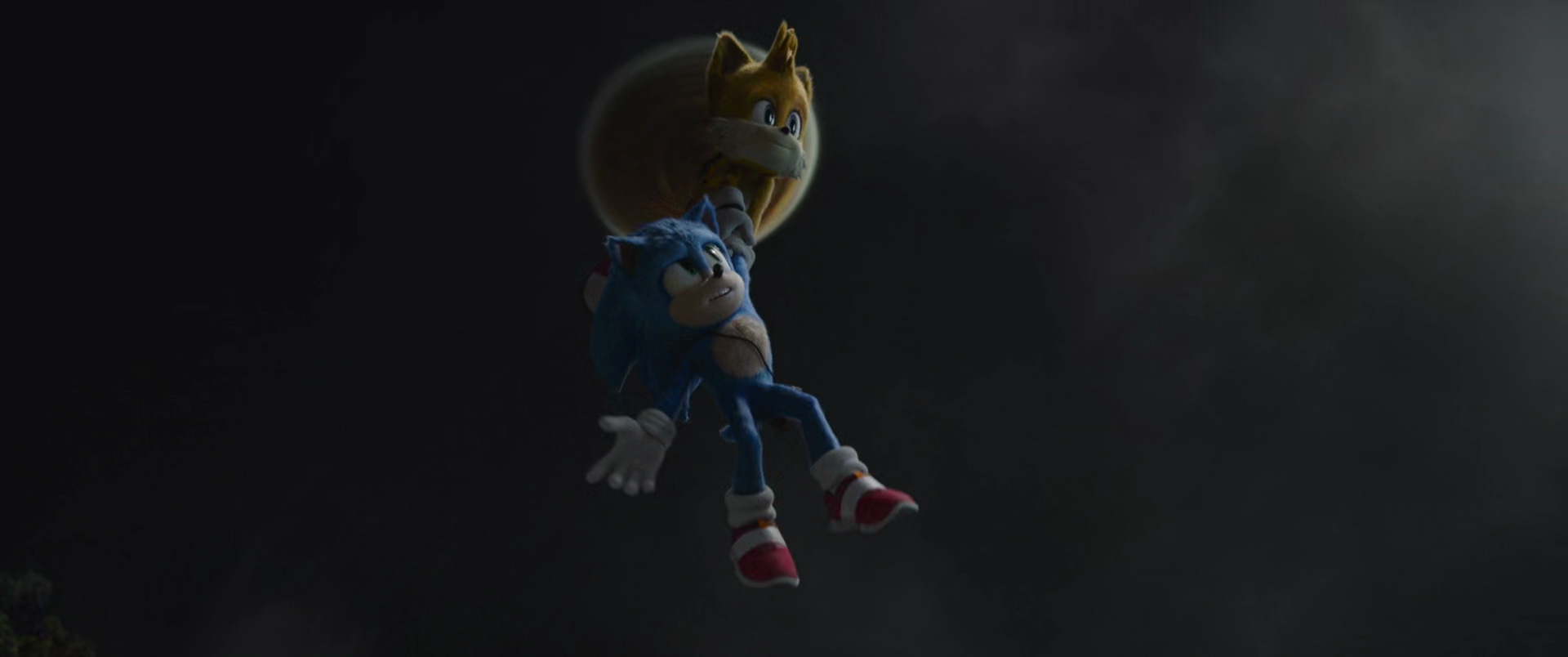
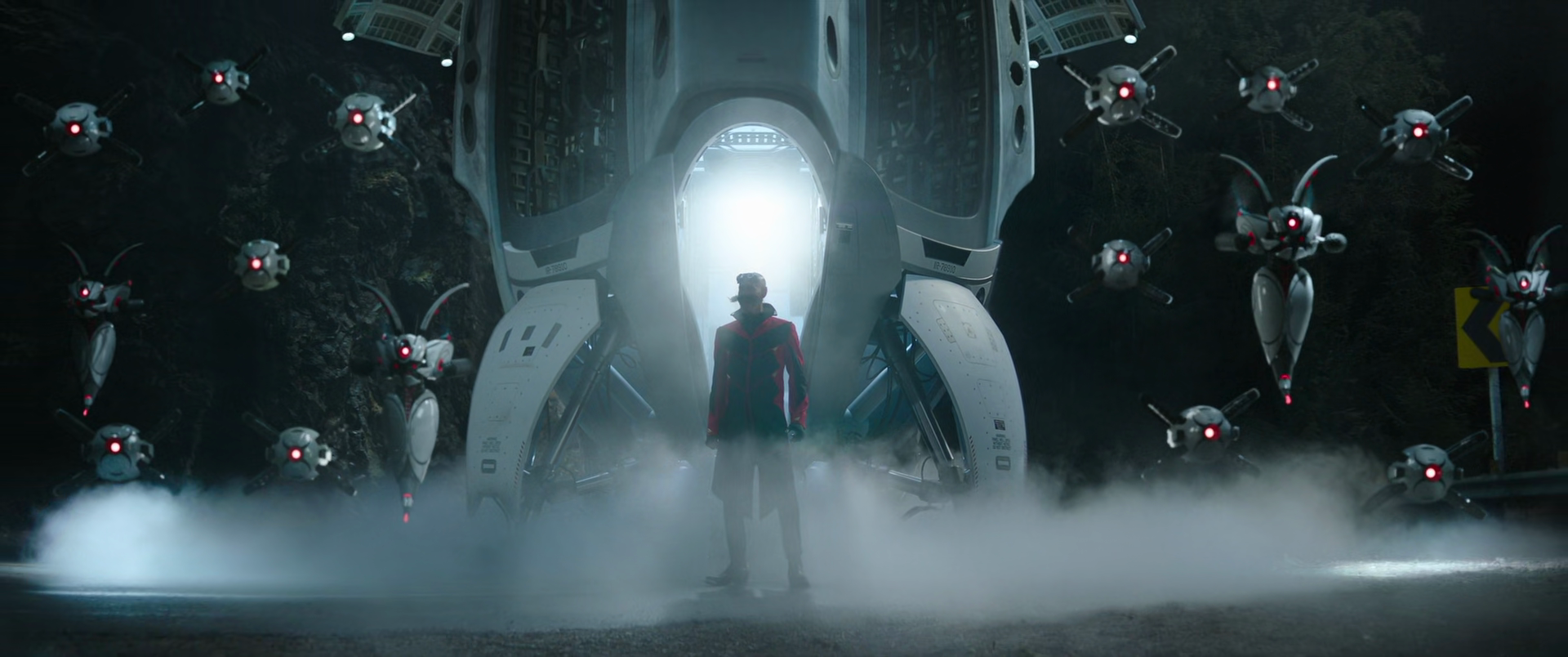
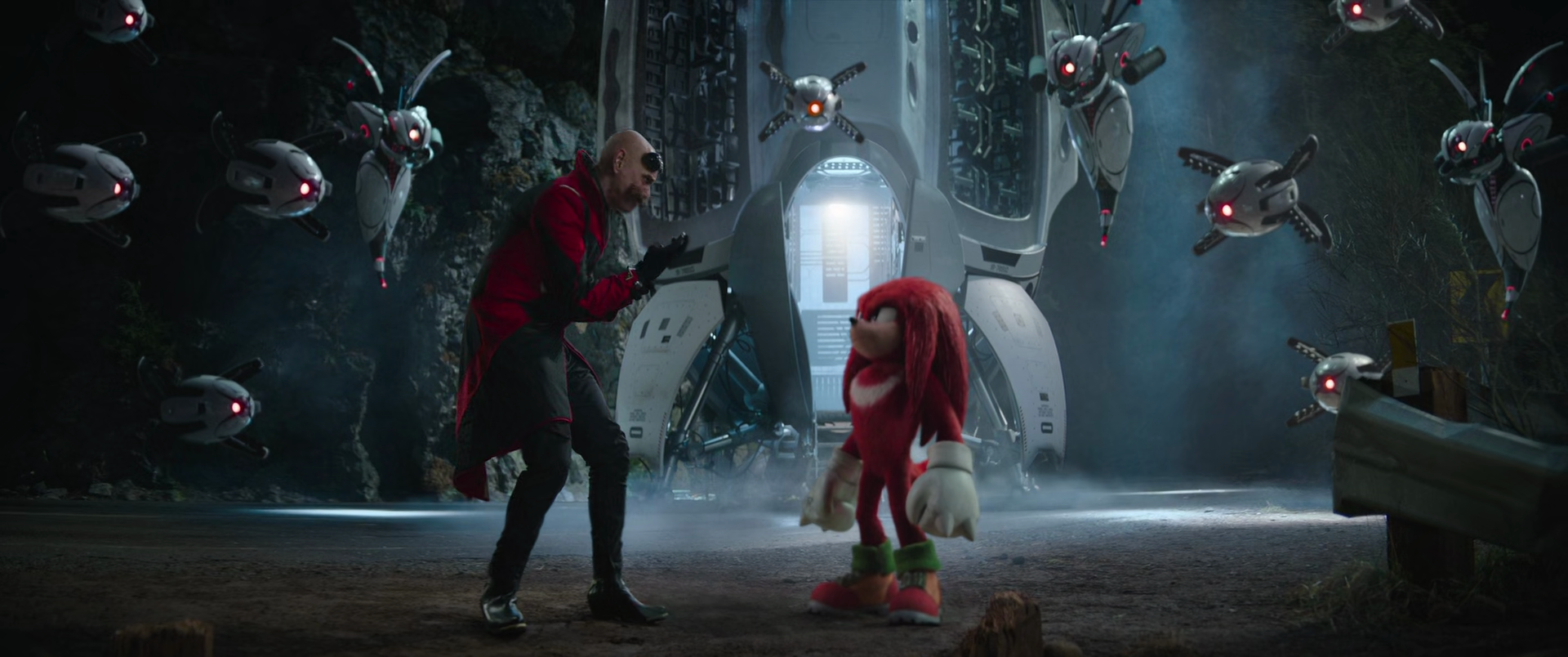
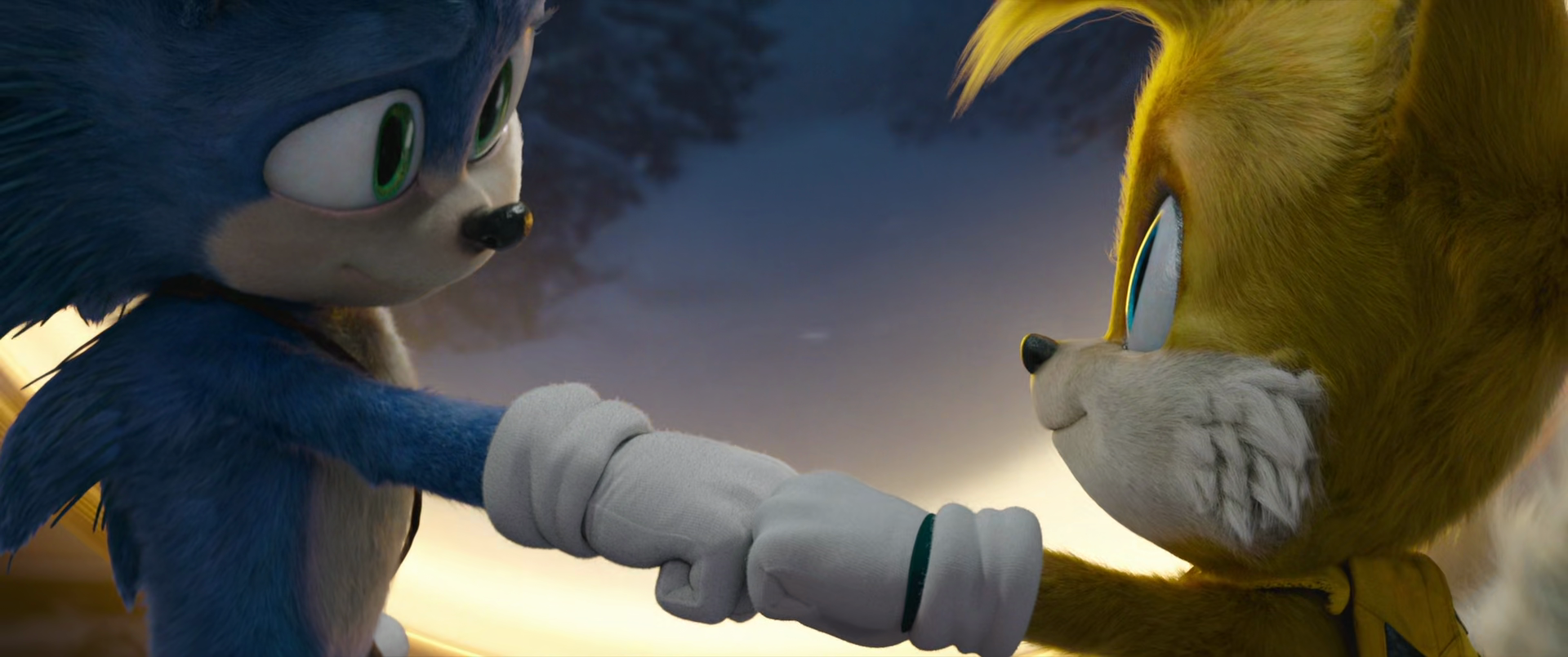
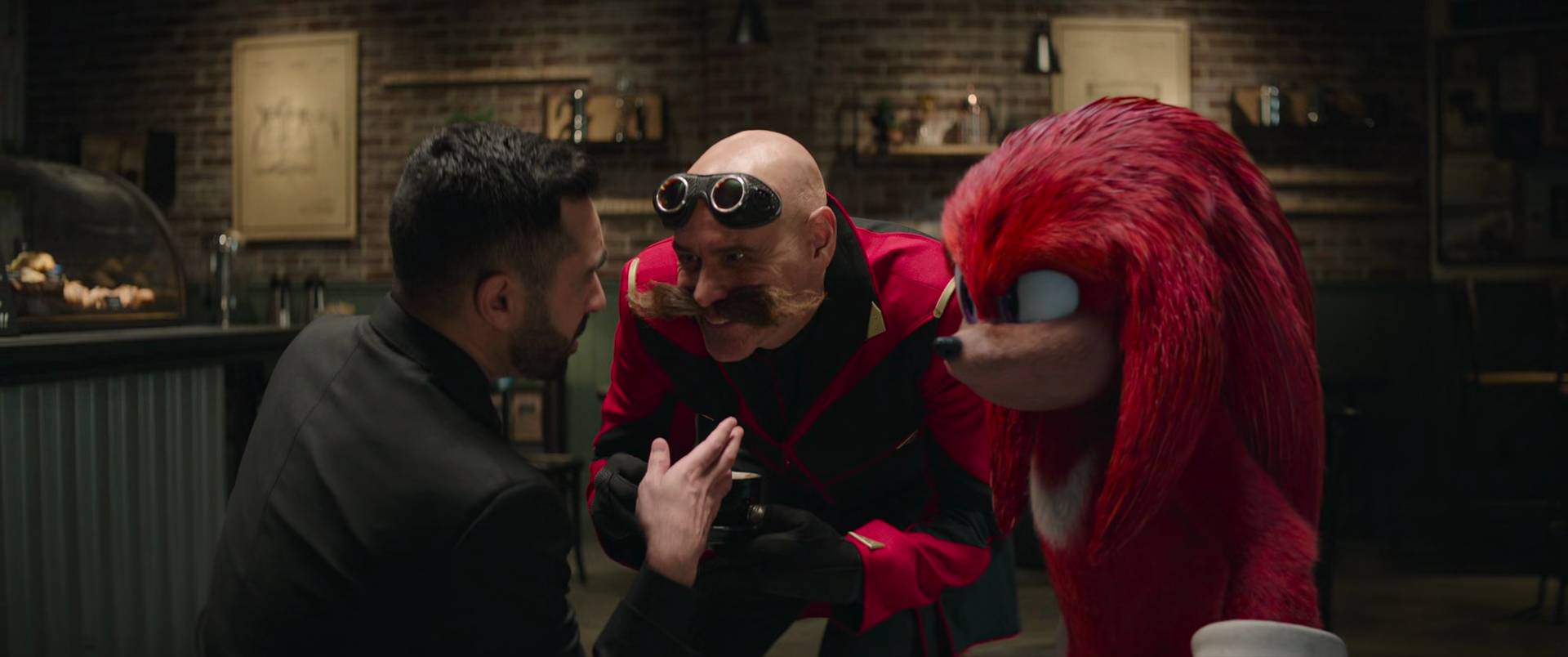
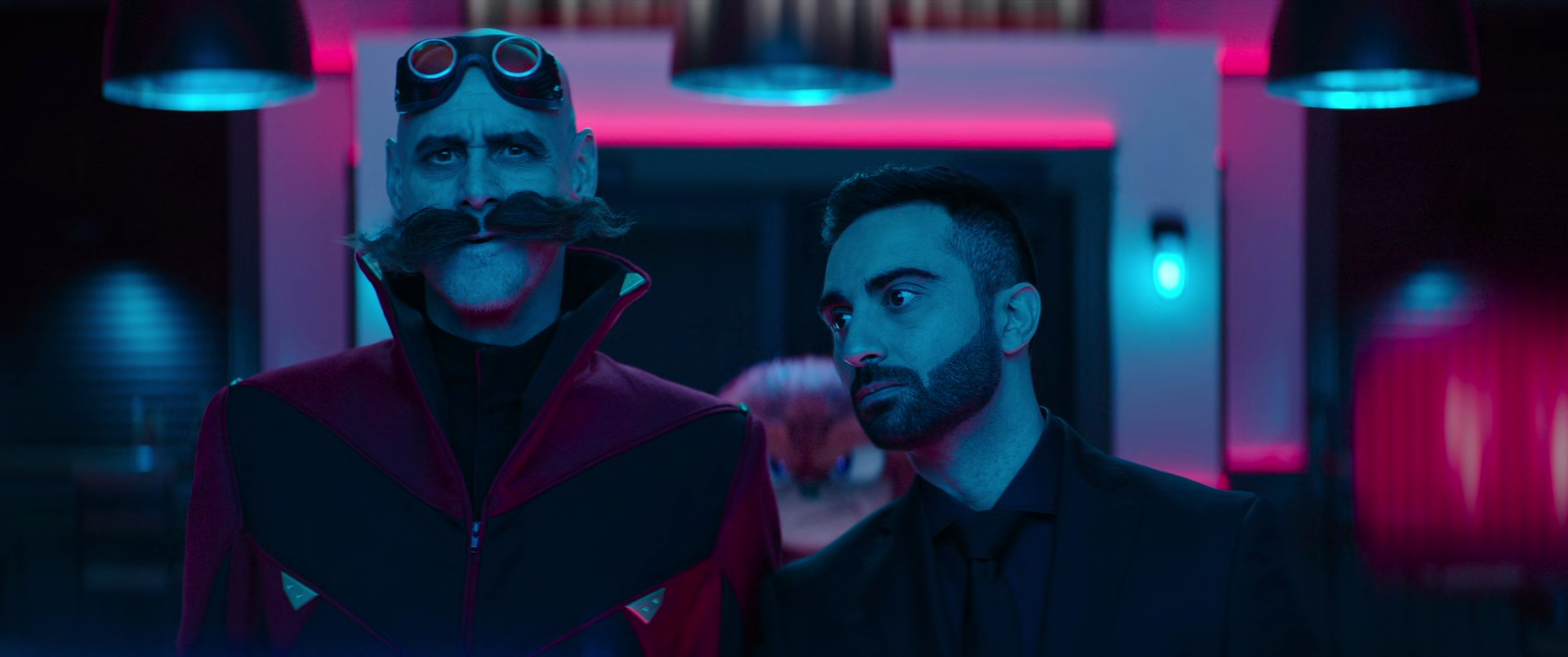

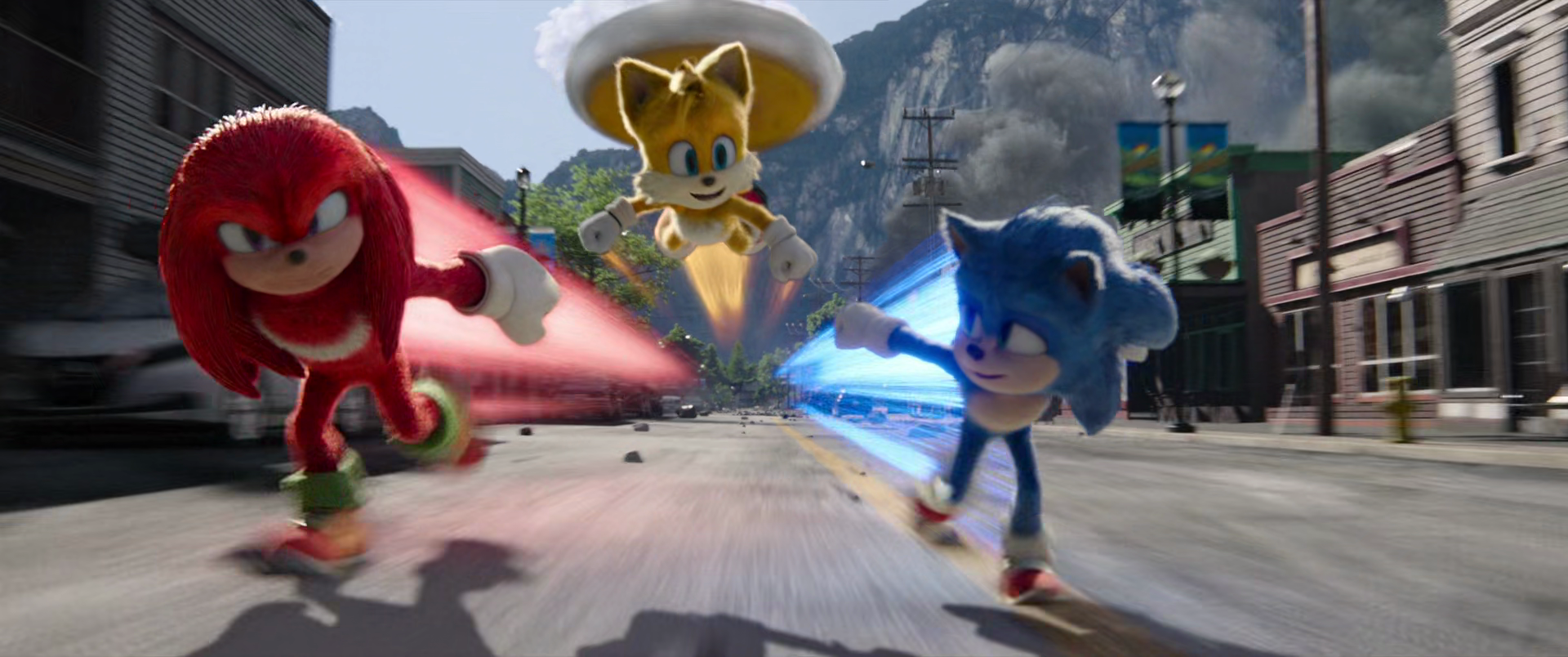
Sonic the Hedgehog 2 (2022)
Film review #526
Director: Jeff Fowler
SYNOPSIS: While Sonic the hedgehog struggles to be a hero on Earth, his nemesis Dr. Robotnik is making plans to return to Earth, helped by the mighty Knuckles the Echidna. Meanwhile, Sonic manages to get some help from Tails, a new friend who comes to warn Sonic of Robotnik’s return, and his quest to find the master emerald…
THOUGHTS/ANALYSIS: Sonic the Hedgehog 2 is a 2022 film, and the sequel to the 2020 film Sonic the Hedgehog. The film starts off with Sonic trying to use his powers for the best, and struggling to fit into the role of a hero. Meanwhile, Dr. Robotnik is trapped on a planet of mushrooms, looking for a way to get back to Earth and get his revenge. The story feels like one you would typically see in a sequel, with the characters being given new problems to overcome, and some attempt to develop their characters. It feels very similar to the first film, but that’s not necessarily a bad thing, as the first one was decent: nothing spectacular, but decent for its young target audience. However, I think the script could have done with another re-write or revision: the whole thing doesn’t really stick together very well, and the scenes feel disjointed, alongside the main plotline of the film getting lost through the mish-mash of scenes. The film does at least focuses on Sonic and his friends for most of it, and the story elements of the human characters is diminished, but this is what you want really. This also has the effect of having their story more self-contained and easier to follow than what Sonic and his friends are doing. At a runtime of two hours, the film could probably have been cut down easily by about fifteen to twenty minutes, and that is probably something that would have been achieved with another script re-write.
All of the characters from the original return, and have their own things to do. The introduction of Knuckles is a stand-out point, with Idris Elba voice the character and really making it his own. Probably the funniest moments in the film come from Knuckles and his over-serious nature. Jim Carrey brings the energy as Dr. Robotnik again, and Agent Stone is a good lackey for him. The introduction of Tails is a bit wobbly, and always feels like any explanation or development of his character is off-hand and implied. I think there should definitely have been more of a balance between the introduction of both Tails and Knuckles to properly flesh out both characters.
Overall, Sonic the Hedgehog 2 is a sequel that continues the work of its sequel without too much fanfare: it carries on the bits which worked and improves on them to some degree, while focusing less on the human characters (but even their scenes feel a bit more focused, even if they’re mostly just for the sake of comedy). It’s still aimed at a younger target audience, but it can still get a few laughs, especially when it relies on good old-fashioned comedy rather than making awkward references (although I’m sure the target audience will enjoy them still). There’s definitely some issues with the story not flowing and coming together, the long runtime, and the story of some characters not being integrated fully into the story, and as mentioned, I think most of these issues could have been addressed with another script re-write or revision. Nevertheless, its still an entertaining film for its target audience, and fits nicely alongside the first film.
-
#525 – The Flight that Disappeared (1961)
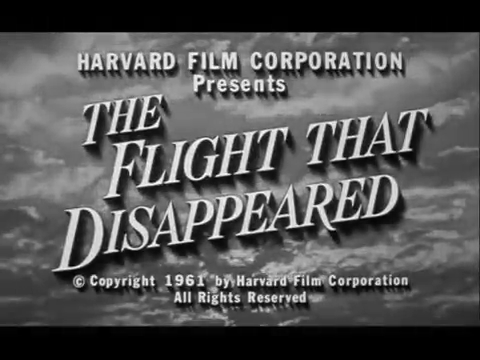
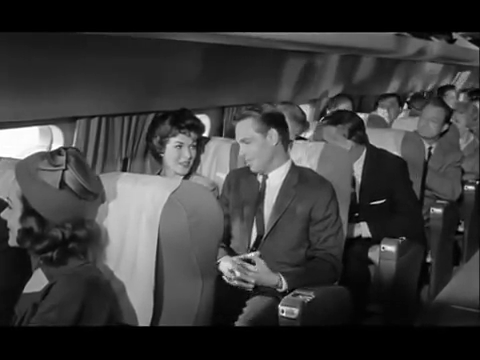
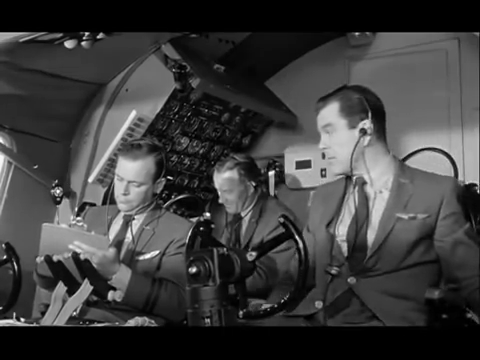
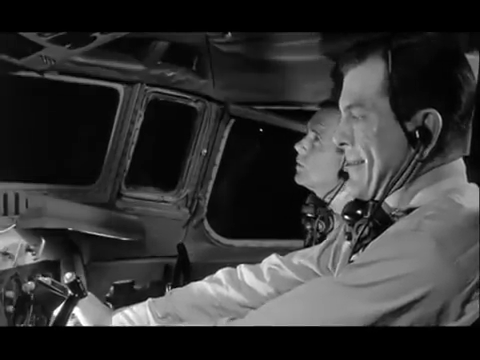
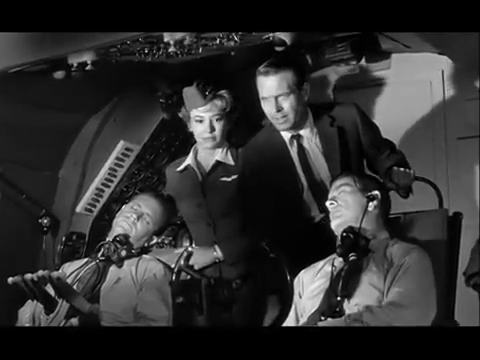
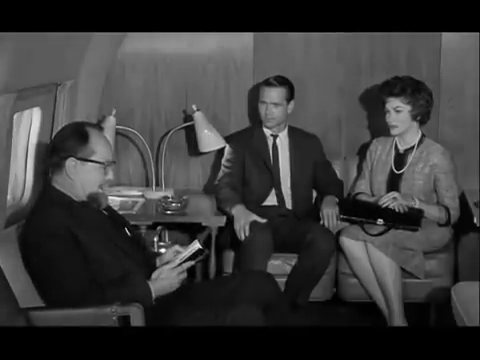
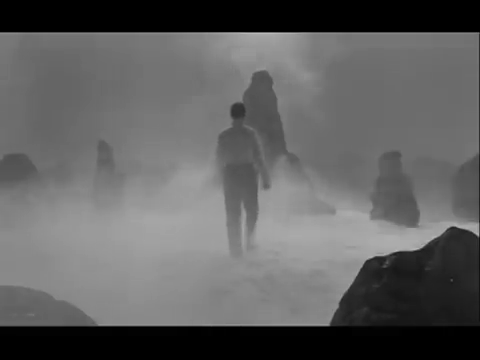
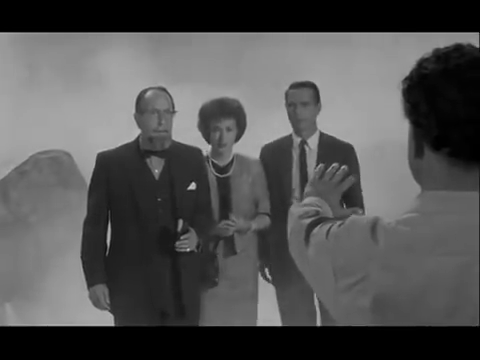
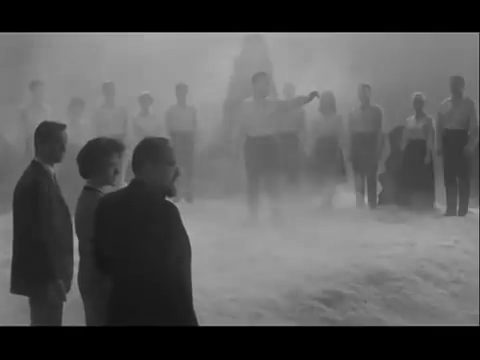
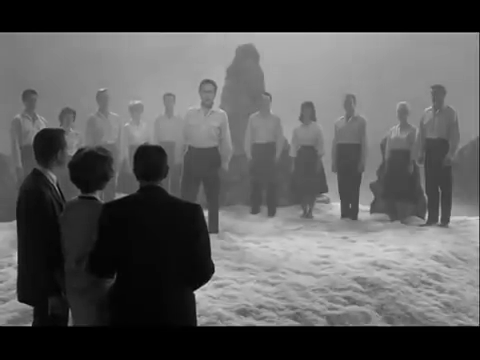
The Flight that Disappeared (1961)
Film review #525
Director: Reginald LeBorg
SYNOPSIS: A commercial flight to Washington D.C. starts to gain altitude uncontrollably, eventually losing contact with the ground. Among the passengers are three top scientists, who have been summoned to the Pentagon for a meeting, and eventually the only ones who are left conscious as the aircraft continues to ascend…
THOUGHTS/ANALYSIS: The Flight that Disappeared is a 1961 film. The plot concerns a commercial flight to Washington D.C. that continues to gain altitude as the pilots lose control and radio contact with the surface ceases. The build-up of the mystery is fairly interesting, and it certainly makes you wonder where it is all going: there’s no evidence of any sci-fi or extraordinary influences, so it does keep you guessing as to what is actually happening. The cast is introduced with enough detail to set the scene well, although what turn out to be the three main characters, the scientists, Dr. Carl Morris, Tom Endicott, and Marcia Paxton, aren’t very apparent until a good portion of the film, which again helps with the mystery, but also leaves the film a bit directionless. The three main characters are unknown to each other when they board, but learn that they are all there for the same reason: to attend a secret meeting at the Pentagon for the development of a new “beta bomb,” a weapon more powerful than the atom bomb. There’s a passenger on the plane who tries to talk to them individually, saying that they must use their weapon on enemy countries with a pre-emptive strike, but the scientists are insistent that it is a weapon to only be used in self-defense or retaliation. The plot, as you can probably tell, is rooted firmly in cold war era politics, although it doesn’t contribute to the mystery too much. While the film does a lot to set up the scene and the people aboard the flight, it is let down by the fact that there’s barely any personality between them, and nothing really happens in the first part of the film.
It turns out the three scientists have been summoned to a trial of sorts by the people of the future who have yet to be born, and probably will never be, if their weapon is allowed to be built and used. The film quickly jumps here from nothing happening, to a bit too much happening: we’re not given any set up for this whole trial and having to face people from the future, and it is all a bit sudden. I feel like the message gets increasingly muddled as well in this part, as the future not born people (whatever we are calling them…) accuse the scientists of being guilty because they conceived the idea of these weapons, and despite opposing their use in anything other than self defense. Is the film’s message essentially seems to be that having a bad idea makes you guilty, whereas the person or politician that uses it is simply a bureaucrat following orders and ticking boxes. There’s something about the whole message here that seems a bit off. I appreciate that the film does look at the moral quandaries it raises with a good amount of depth, but the overall conclusion just seems a bit weird; holding oneself morally accountable to people that have not or may never be born just seems a bit misguided to me.
Despite the film being an independent production, it is made quite well: the airplane where most of the film is set is a set, but it is pretty convincing and accurate. Overall, The Flight that Disappeared has an interesting mystery, but is bogged down by dull characters, and slow pacing at the beginning. The resolution and messaging is also muddled, but it does at least explore it’s subject in some depth. It probably would have been at home as an episode of The Twilight Zone, and certainly fits that tradition of 60′s science-fiction.
-
#523 – The Tunnel (1935)
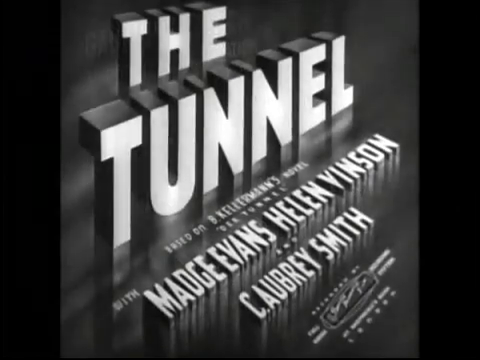
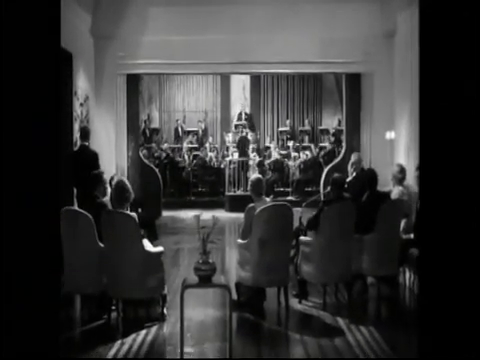
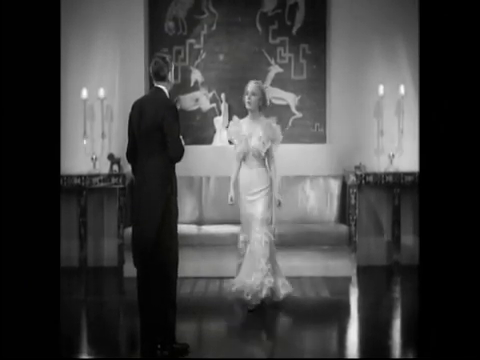
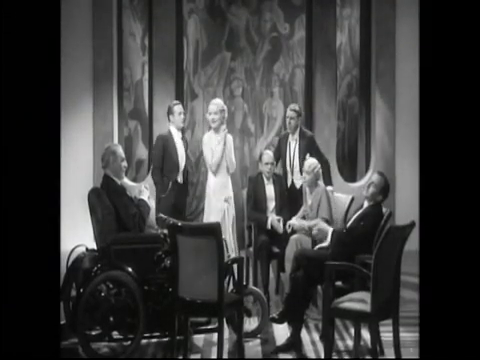
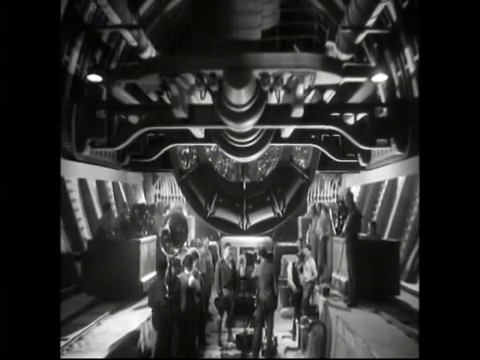
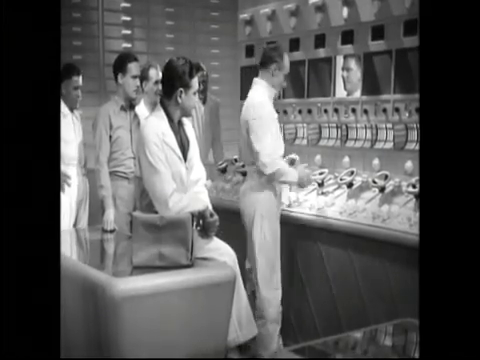
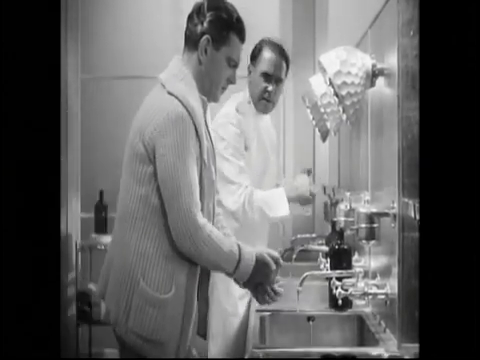
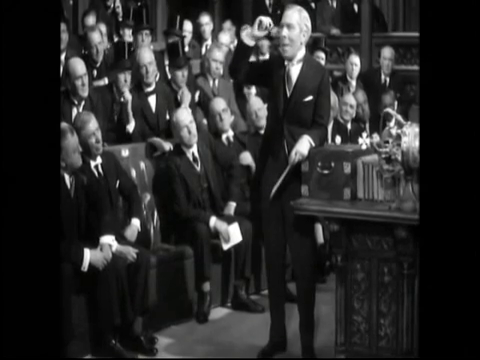
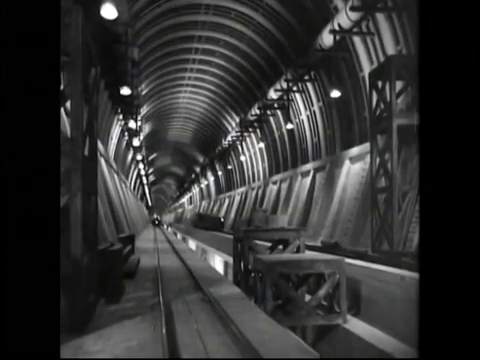
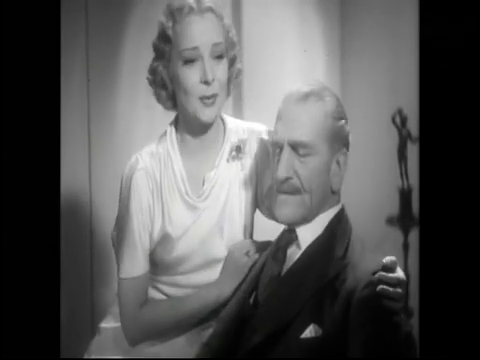
The Tunnel (1935)
Film review #523
Director: Maurice Elvey
SYNOPSIS: Richard McAllan is an engineer who has a dream to build a tunnel between England and the United States. He convinces a group of billionaires including Lloyd, the world’s richest man, to fund the project, but there are many other problems that present themselves on the way to the projects completion, both in terms of McAllan’s private life, and those looking to profit from the tunnel’s failure…
THOUGHTS/ANALYSIS: The Tunnel (released as Transatlantic Tunnel in the U.S.) is a 1935 science-fiction film based on the novel Der Tunnel by Bernhard Kellermann. The film opens up with an orchestra performing for a select group of billionaires at the home of Lloyd, the richest man in the world. Engineer Richard McAllan is also there, to propose the construction of a tunnel underneath the Atlantic Ocean, connecting England and the United States. After much persuading, he manages to get their support, and work on the most ambitious project in human history begins. The plot of the film goes through all the drama and problems that would be associated with such a project, and splits its time between looking at the tunnel itself and the logistical problems, and also how the project impacts McAllan and his relationships with those around him. The balance between the two is well executed, and everything flows and connects nicely. There are a few changes from the novel and the 1915 film version, but they are mostly minor. The setting seems to be a near-future setting, where the Channel Tunnel was completed in 1940, so it’s a different vision of the future rather than what was actually happening in 1940 in Europe.
The tone of the film is very uplifting and optimistic, and McAllan is presented as an idealist who wants to use this project to change the world for the better. We also see political leaders in the U.S. and U.K. similarly making speeches in the U.K. parliament and U.S. congress to this effect. The film stands out in two respects: First, the acting is pretty good for the era, and the emotional scenes are delivered very well. The dated romance stuff and traditional roles still feel dated, but when the film needs to convey more raw emotion, it does so very convincingly; more so than any other film I’ve seen of the era. The cast isn’t too varied, but everyone has a specific role to play, and you get a good sense of what they’re there for.
The second stand out part of this film is the sets and design: you really get a sense of the tunnel’s massive scale in these large sets full of machinery, filled with crowds of men digging. The Tunnel is actually the third incarnation of the film released over two years, with the German and French versions released first, and the English version released after. Each version uses the same sets and mostly the same script, but changes the actors for the different languages (this was before dubbing was a thing). As such, the sets were probably meant to last. The English version also has a different director, which means it deviates a little more from the other two. Perhaps the big difference between the film and the novel is that the film presents a more evenly optimistic tone; and that the end justifies the struggle of the development of the tunnel. The novel focuses much more on the hardships though, and McAllan (Mac Allan in the original German) becomes a worldwide reviled figure. The ending is also a high note, marking the completion of the tunnel and new prosperity for “the English speaking world,” but we never see how this takes shape, but since the film is about the construction and completion of the tunnel, and dealing with it’s consequences would probably dilute that focus. The novel does look a little closer at the effects of the tunnel’s completion, but it’s not entirely optimistic: the tunnel is already shown to be updated (the completion of the tunnel takes a lot of years to finally complete, and by then, it had already become obsolete, as airplanes were now able to carry people across the Atlantic faster than travelling through the tunnel. With regards to this film version of The Tunnel, it has some very strong points in both the acting and the design, and really brings the story to life in this regard. Some parts are a bit predictable and rooted in the old-fashioned values of the day, but there’s enough to make it an interesting watch if you like the films of this era.
-
#522 – The Tunnel (1915)
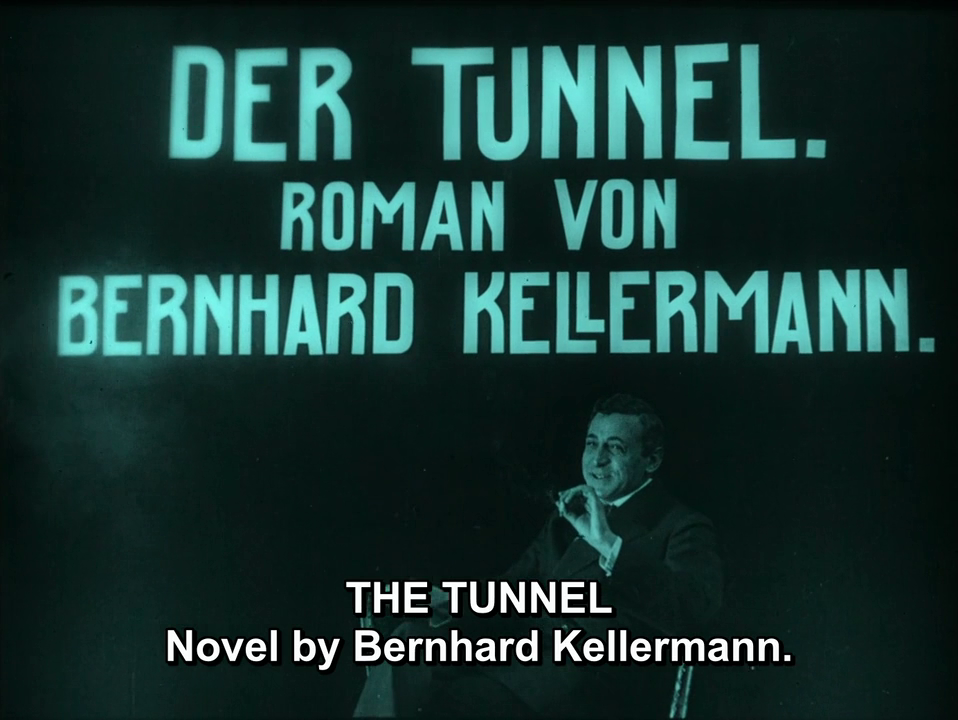
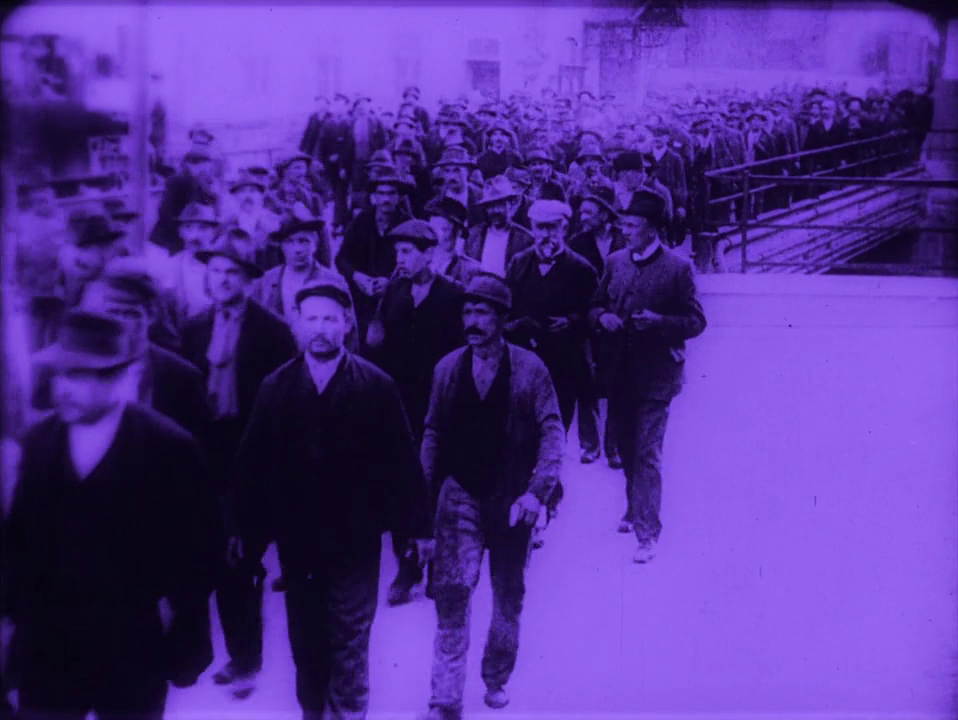
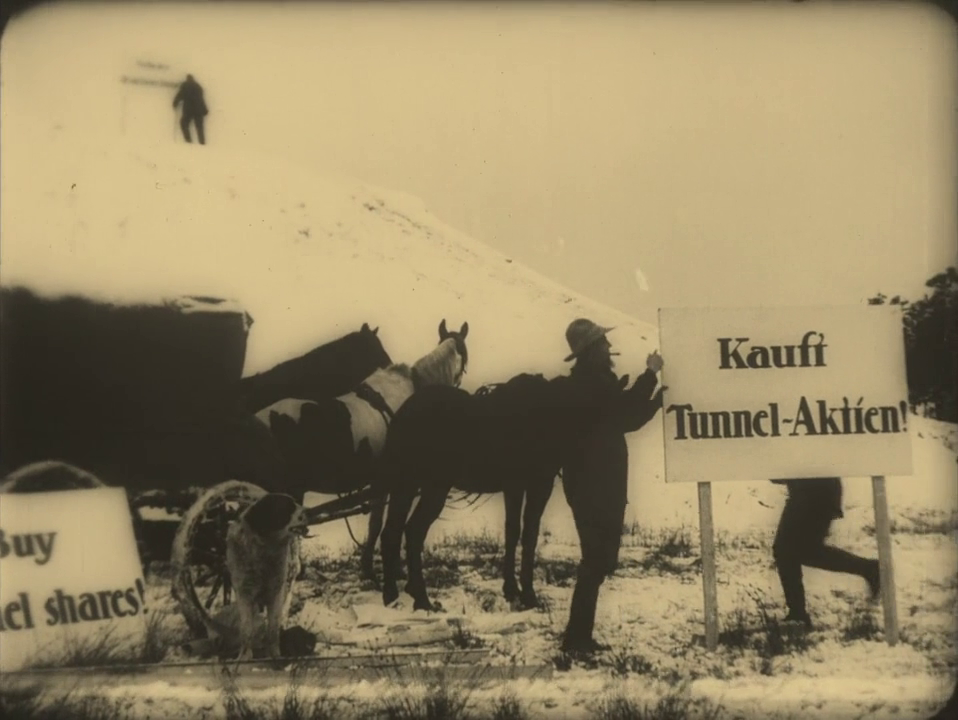
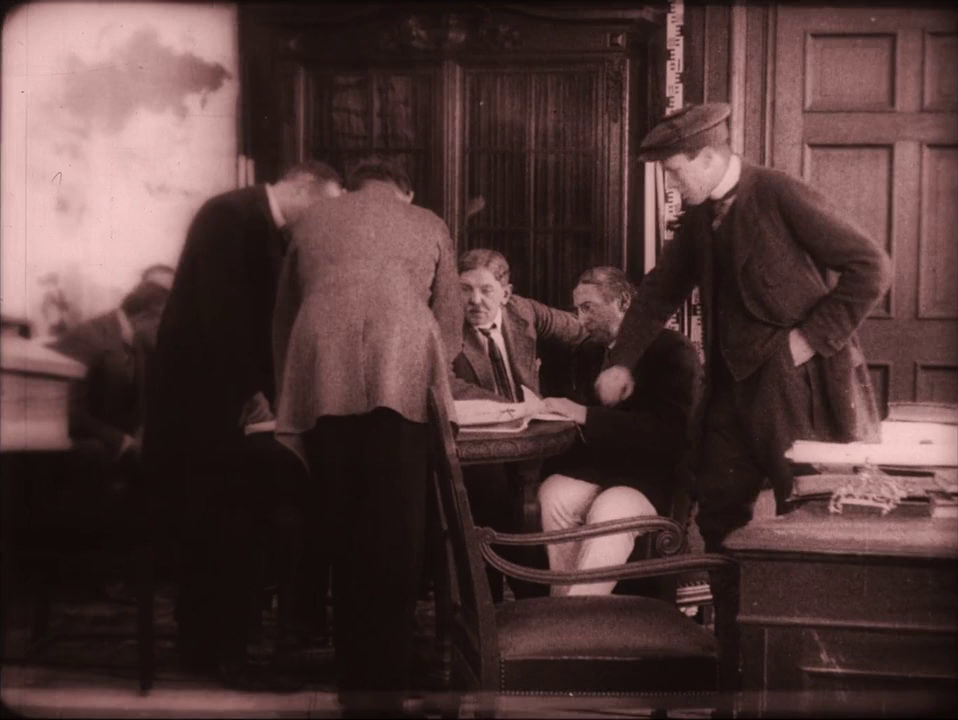
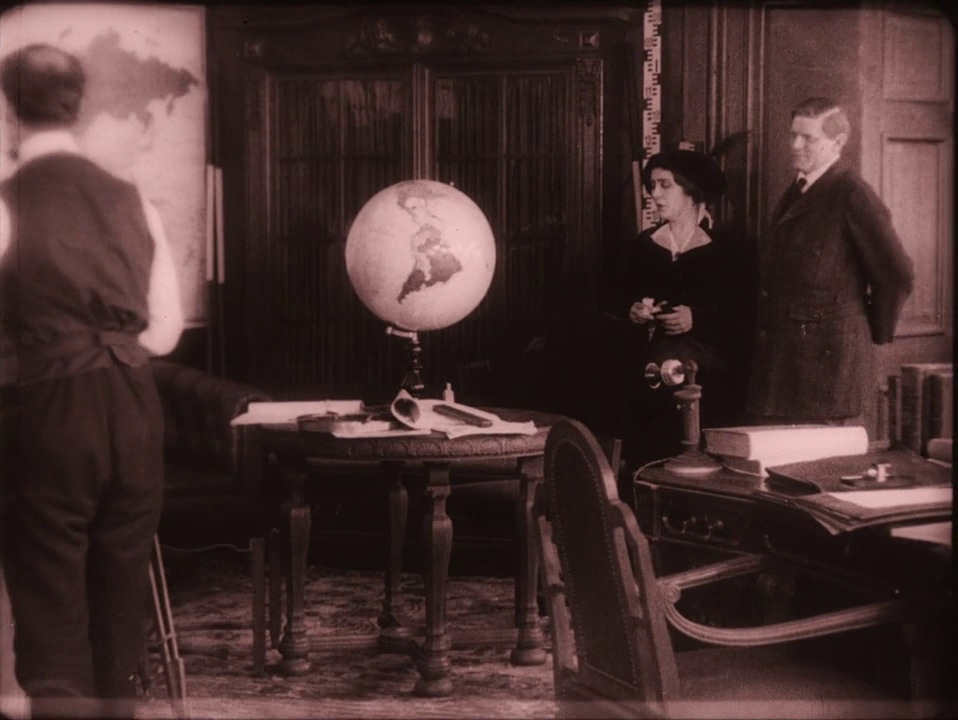
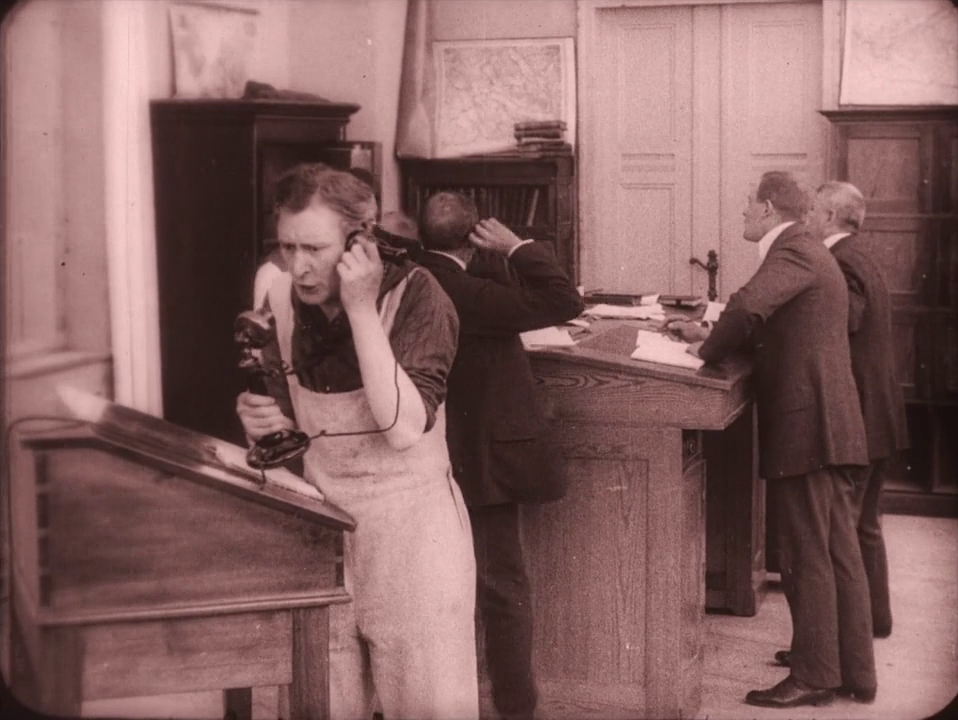
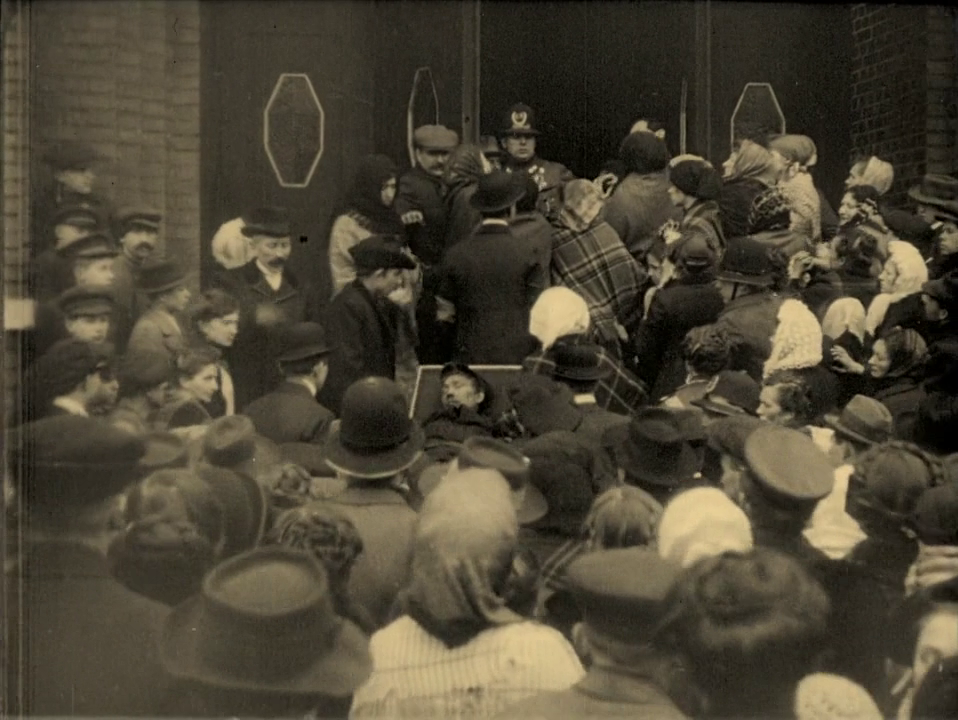
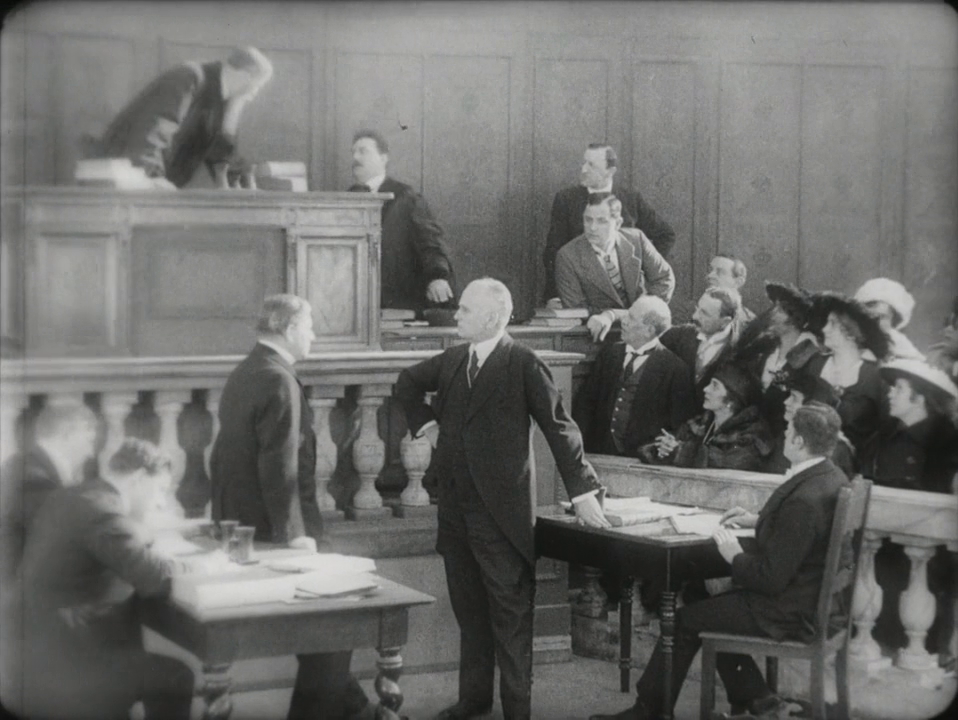
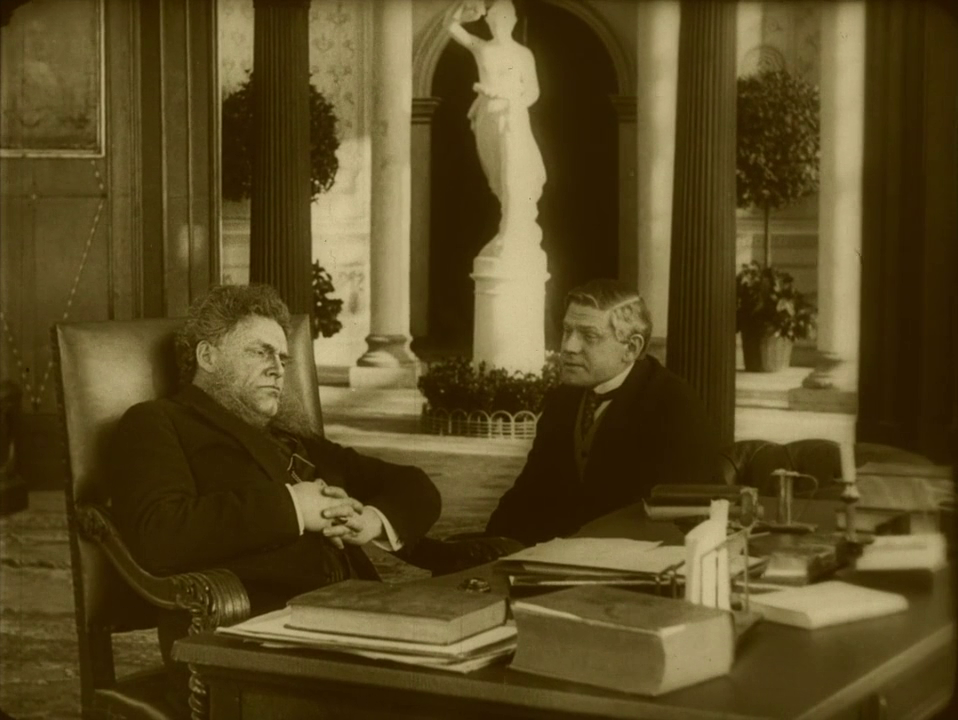
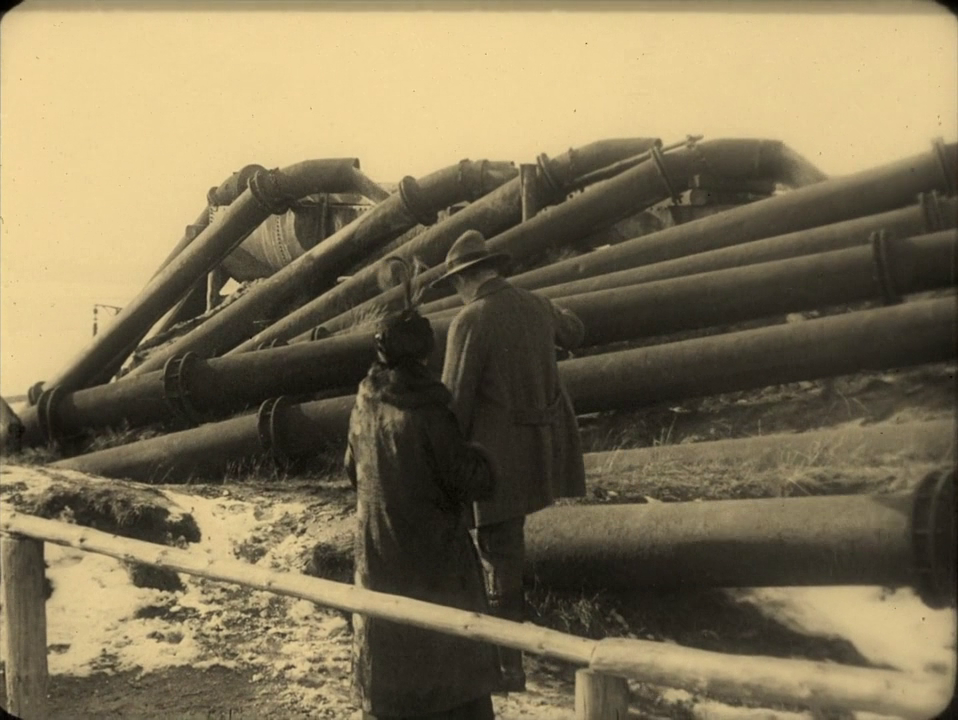
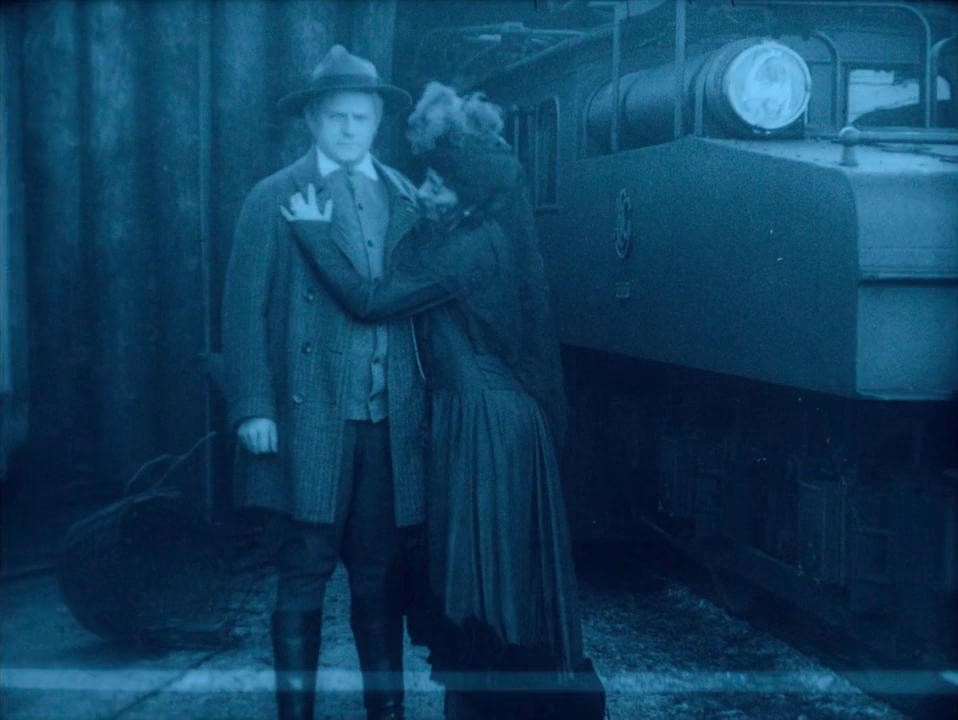
The Tunnel (1915)
Film review #522
Director: William Wauer
SYNOPSIS: Max Allan is an engineer who has the vision of building an underground tunnel that connects Europe and America. He convinces the world’s richest men to fund his venture, including Lloyd, the world’s richest man. However, there are those that do not want to see the project succeed, and will do anything to prevent it’s completion. This, and a number of setbacks, make it difficult for Max to fulfil his vision…
THOUGHTS/ANALYSIS: The Tunnel is a 1915 film based on the novel of the same name by Bernhard Kellerman. The story centres around the vision of engineer Max Allan, who wants to construct an underground tunnel between America and Europe under the Atlantic Ocean. The story of the film is fairly simple: it’s less of a traditional story centred around the characters and a plot, but more so focuses on a vision for the future and what such a project would look like. It was probably a vision of hope in a world in the midst of the first world war. Max has to persuade the billionaires of the world to fund his project, so arranges a meeting in New York to persuade them, giving an opportunity for the film to make it’s point to the billionaires as well as the audience. Being a silent film, there’s not too much room to create engaging dialogue or complex set-ups, but even in the context of the silent film era, this film feels very basic and minimal: the interstitial text describes what is going to happen in the next scene, and then it happens. It’s very literal, and as the text already has described what is going to happen, there’s little room for surprise or interest to develop.
The film does a good job of exploring the issues that would surround the making of such a project: it is described as taking nearly twenty five years to complete, which even then, that might be described as ambitious. There’s lots of footage used of masses of men hard at work digging the tunnels, and this really gives a good sense of the scope of the project. I’m not sure if the footage was shot specifically for the film, but it fits in well. There’s also a balance between the problems that the workers face, and the problems that Max faces on a personal level, and even though the characters aren’t really fleshed out in any way, you still get a sense of the problems they are facing.
The Tunnel is a vision of hope for what humanity can achieve. The ending text describes how when the tunnel was finished it brought about peace and prosperity for all: that might be a bit too simple of an ending, but it’s definitely the message that the film is going for. Specifically, the issue of people being scared of technological progress will certainly make enemies of those still rooted in tradition, but that should not stop people with a vision. As you might expect, there’s a few instances of problematic portrayals of non-white/European people and cultures, but these are limited. Though the film is dated and is not very entertaining, it does have a message regarding progress that is still relevant, and only for that reason it would be worth a watch.
-
#521 – 6 Hours to Live (1932)
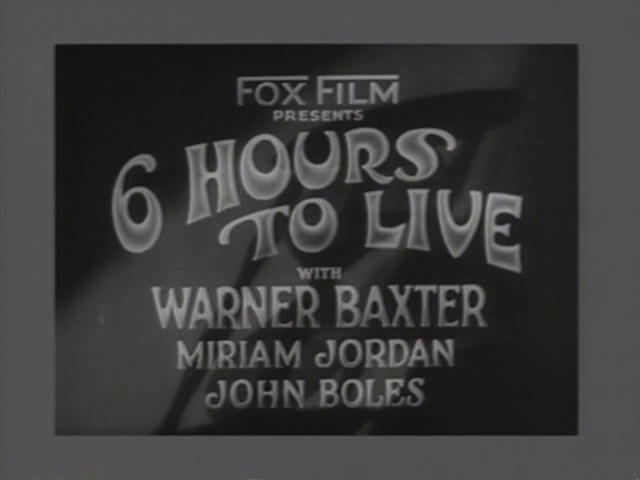
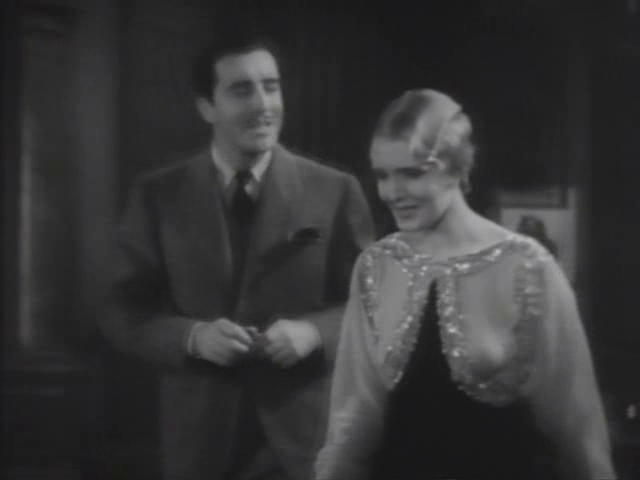
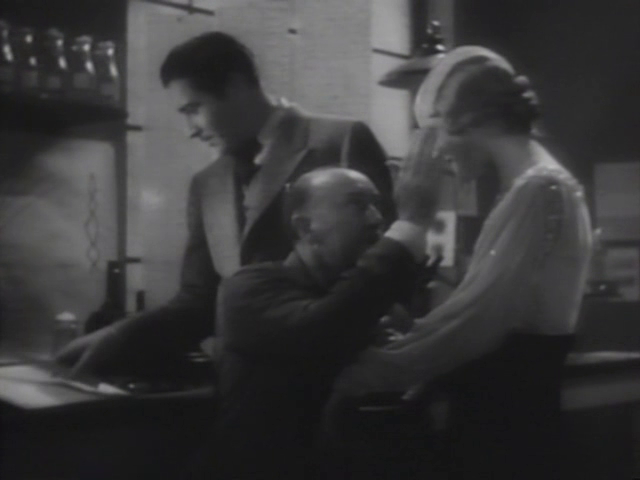
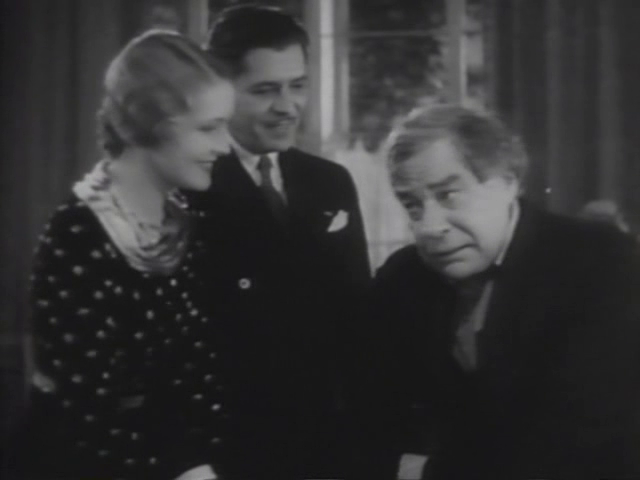
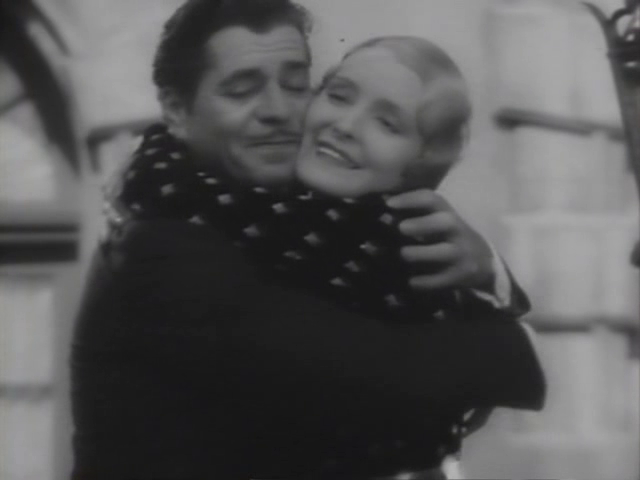
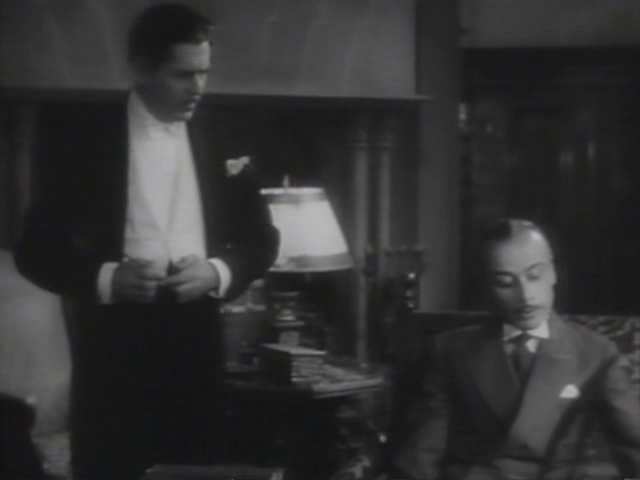
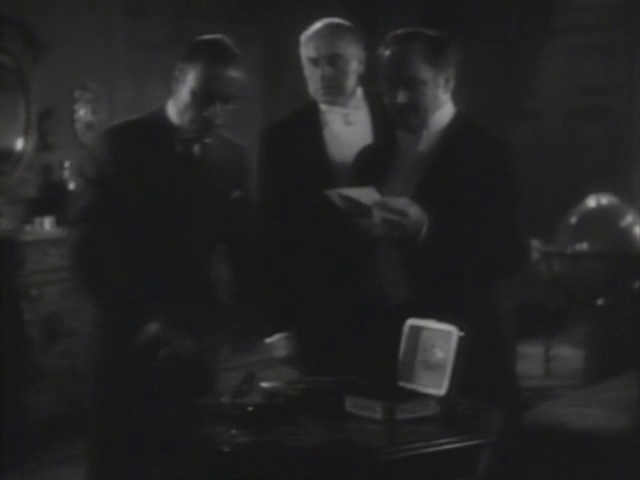
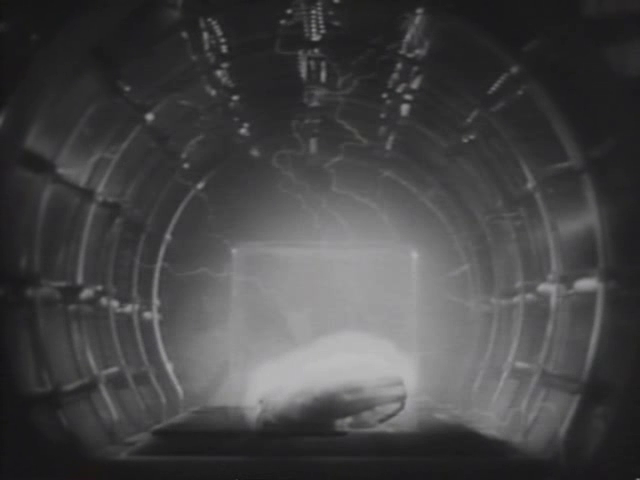
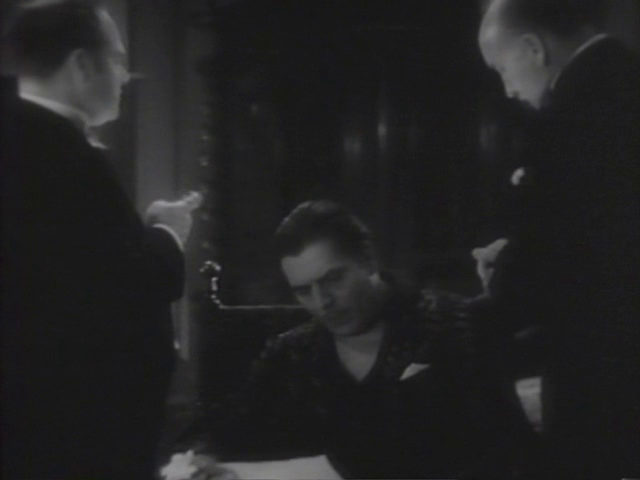

6 Hours to Live (1932)
Film review #521
Director:
SYNOPSIS: World diplomats have convened at a special assembly to agree on a new global trade deal that requires unanimous approval from all countries. The only country that is opposed to it is Silveria, whose representative Paul Onslow believes it is only his country which will suffer form it. When Paul is murdered, Professor Otto Bauer uses his experimental invention to bring him back to life, so Paul can identify his murderer and be present at the final vote of the trade deal. However, the experiment only allows him to live six more hours, so he must wrap up all his business in that time…
THOUGHTS/ANALYSIS: 6 Hours to Live is a 1932 drama/sci-fi film, based on the story “Auf weidersehen” by Morton Barteaux. The film centres around a meeting of representatives from every country in the world, as they have convened to agree on a new global trade deal. The deal requires unanimous approval from every country, and the only country refusing to sign is Silveria, represented by Captain Paul Onslow, who believes the deal is bad for his country. This, naturally, has made him many enemies, and an attempt on his life is made after he leaves the conference. While he is in hiding, he realises he is in love with Baroness Valerie von Sturm, who his friend Karl Kranz is in love with, setting up a love triangle of sorts. Unfortunately, Onslow is killed in another attempt on his life, but Professor Otto Bauer’s latest experiment is able to bring him back to life. Unfortunately, it can only do so once for six hours, so Onslow has to find his murderer, deal with his affairs, and go to vote on the trade deal all before he dies for the second and final time. The story is primarily a drama; partly political, partly romance, and as such, there is a lot of dialogue to get through, and many of the scenes are just talking. A lot seems to happen to Onslow in one day, with him realising he is love, having two attempts on his life, and having to vote on this trade deal: with all these things going on, you’d think the film would be packed full of things, but as mentioned, the talking really takes over the majority of the scenes. I feel like more could have been done to set the scene of the film: the politics of this trade deal are left really unexplored, and we don’t know the details, and we are left to experience what feels like an entire relationship between Onslow and the Baroness in the span of one day. It’s easy to pick up and understand, but some exposition would have helped, like why the fictional country of Silveria is the only country in the world not to benefit from this supposed deal, and why he is holding out against it; since the representative who would fill in for him if he was absent also seems to want to vote for it. Him being against everyone else almost makes him seem like a villain, as we have no real knowledge of his motivations, over than “love of his country.” which could mean anything.
So when Onslow is brought back to life for six hours, it makes things a bit more interesting: he has to confront his murderer, vote against the treaty, and deal with his personal affairs all before his time runs out. Given only that a few people know of what has happened, he is able to mostly carry on like nothing has happened, and uses that to end his relationship with the Baroness and to force her to move on, as she is unaware that he is about to die (again), and that will be easier for her to accept. While you might think that returning from the dead would be a shocking and harrowing experience knowing you’re about to die again, Onslow is very serene and tranquil about the whole thing, and his “experience” of death has left him unafraid of what is to come. Instead of hurrying about, he revisits some people he met during the day, to comfort them and aid their troubles. He becomes almost an angelic figure, and I think the leaving of many things ambiguous is intentional to give it that mysterious feel and to keep the mystery of death intact. It almost feels like Onslow is meant to have a change of character when he was revived into this caring, empathic individual, but his personality was more or less like that to begin with, which doesn’t have the impact of something like Ebenzer Scrooge’s change of heart in “A Christmas Carol.” while the premise is interesting, it eventually falls into a very typical message of “science not going too far, and that some things should be left to God.” which crops up a lot in films of this era. Also, the whole reveal of the murderer at the end is anticlimactic, as it turns out to be someone who was only briefly seen at the start of the film, and plays no part whatsoever in anything. The scene where Onslow visits a prostitute to comfort her is a good one with some uplifting and genuine dialogue, but on the whole it is a very mixed bag.
Overall, 6 Hours to Live has an interesting premise, and provides some dramatic scenes, but some parts (particularly the romance and the dichotomy of science vs God) feels very much of it’s time. The acting carries the drama very well for the most part, but being very dialogue-heavy, it is not going to appeal to everyone. there’s definitely areas to improve in the film, but it still has some good points that keep the film together.
-
#520 – Lôi Báo (2017)
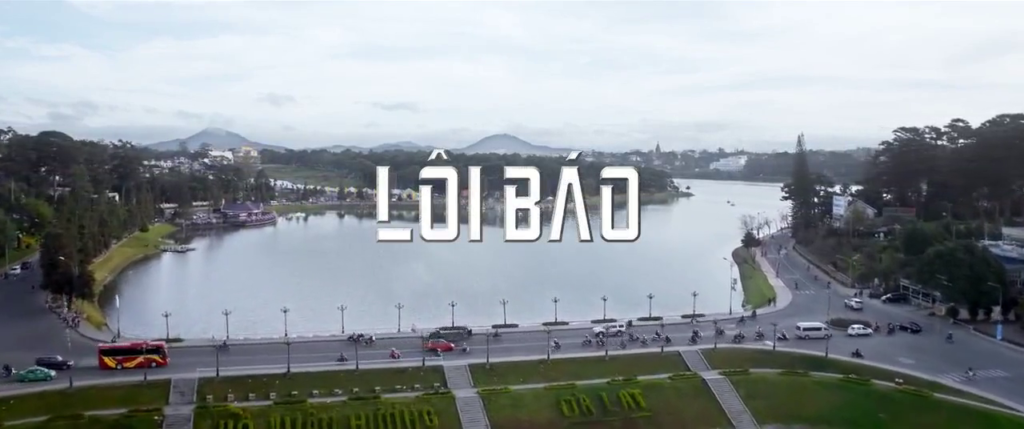
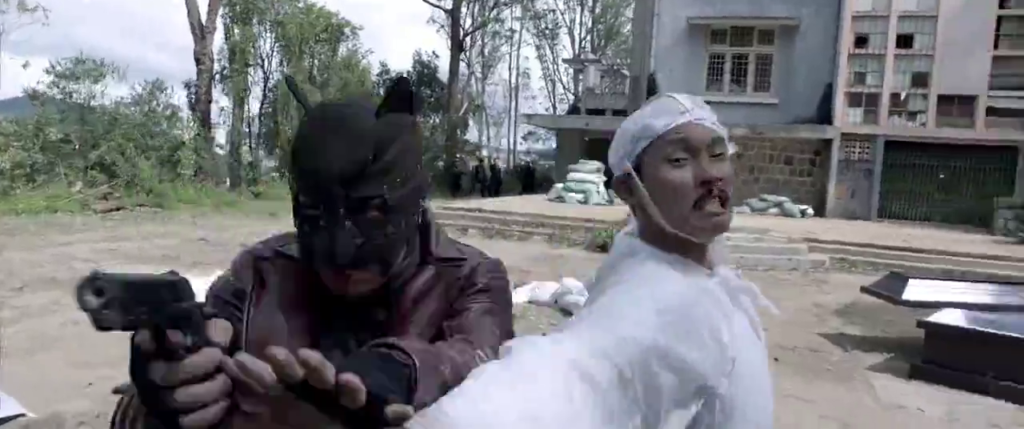
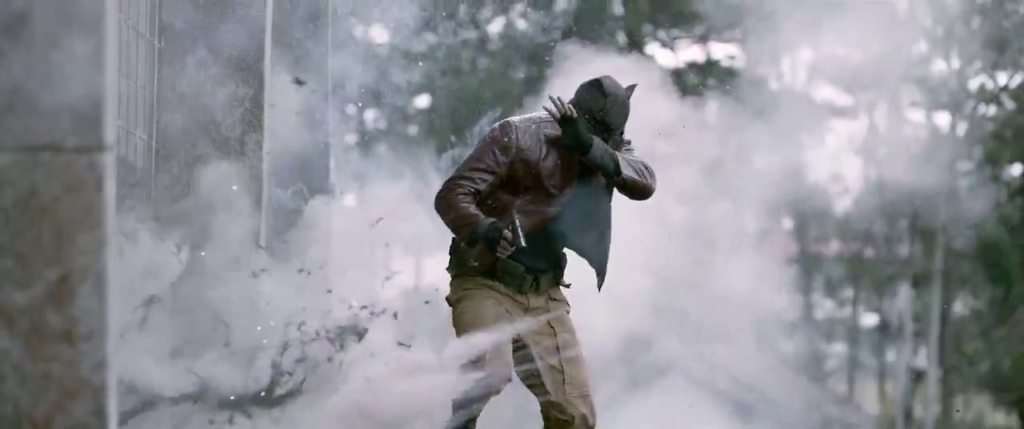
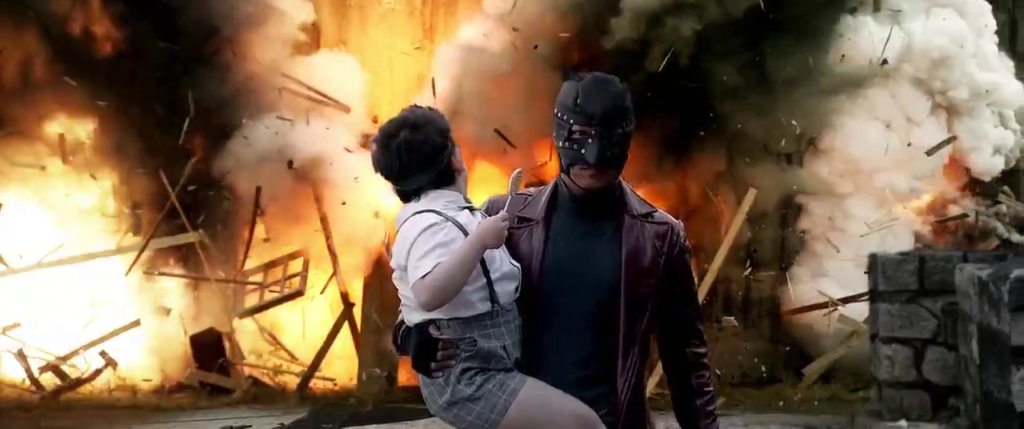
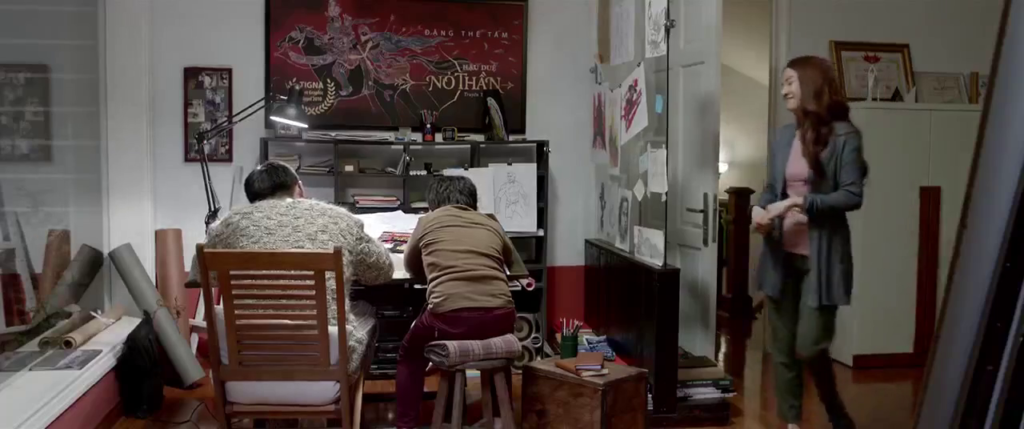
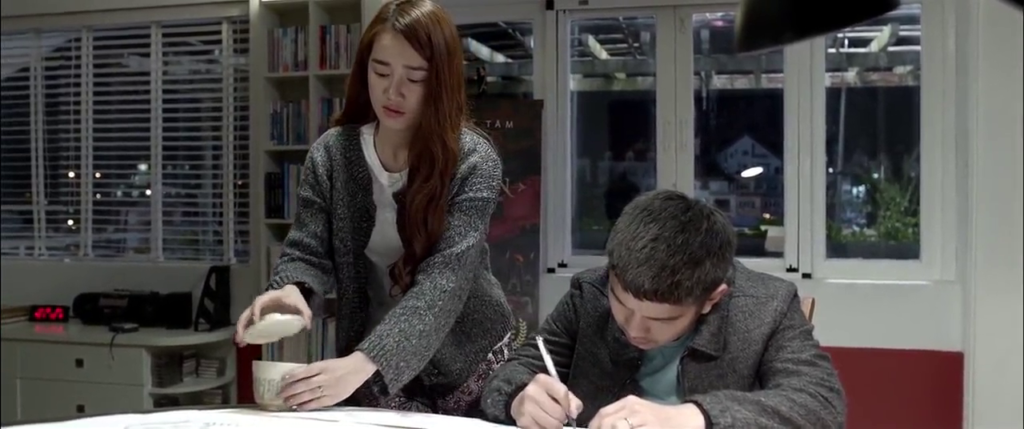

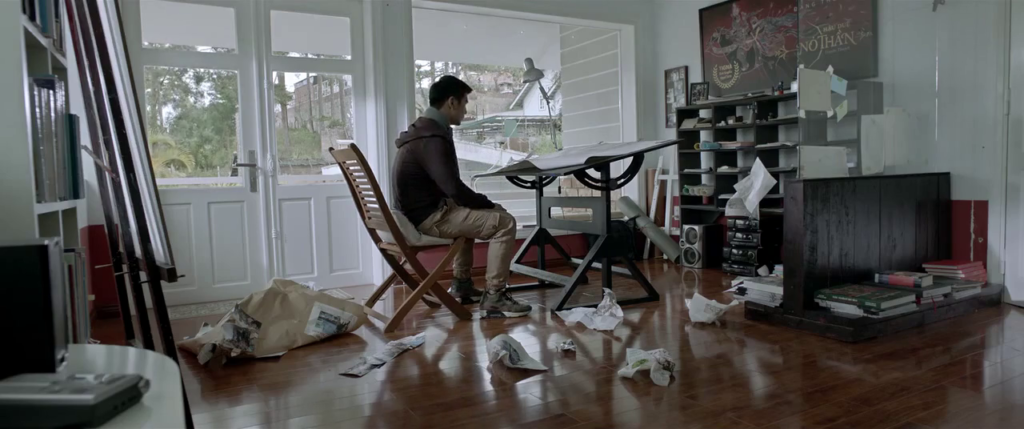
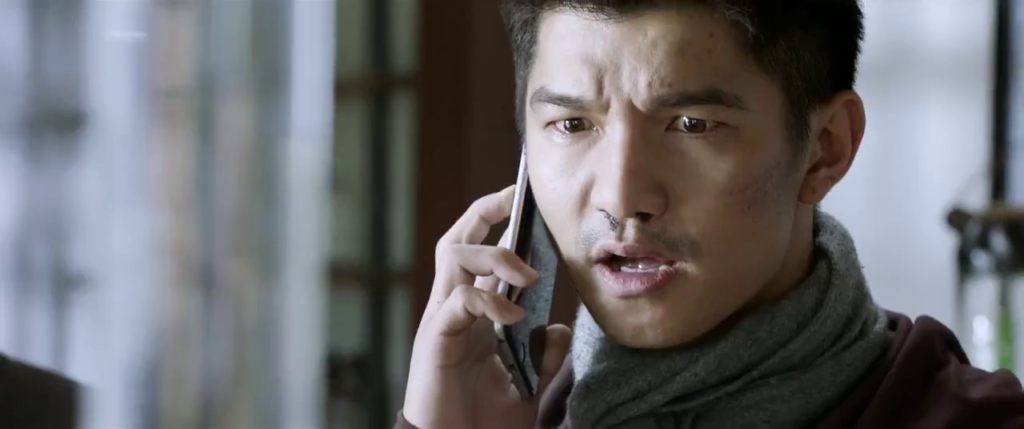
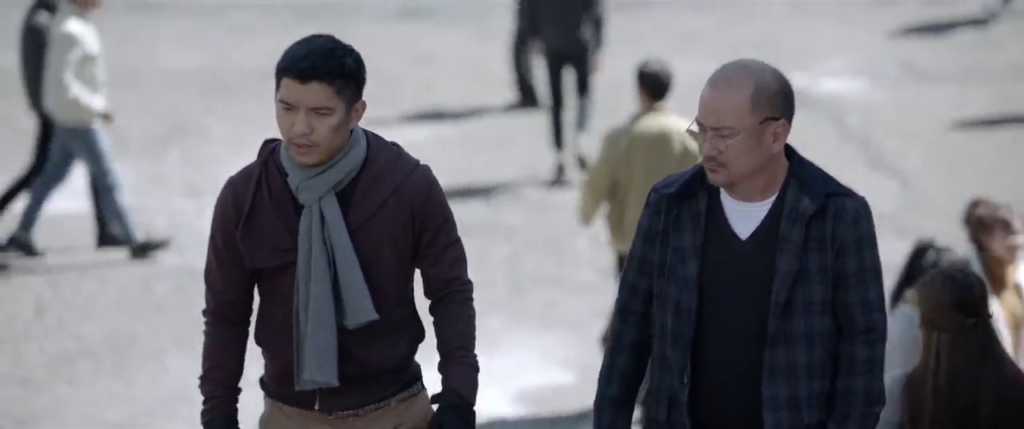
Lôi Báo (2017)
Film review #520
Director: Victor Vu
SYNOPSIS: Tam is a comic book artist who is working to finish his next big superhero project. His work has left him neglecting his health, and when he finally visits a doctor about a cough, he discovers he has terminal lung cancer. Tam visits a family friend, uncle Ma, who reveals that he has been working on a secret project to transplant heads onto other bodies. Although initially reluctant, Tam eventually agrees to undergo the procedure, using a body that Ma found in the woods. The operation is successful, but it seems to have come with a side effect: he has acquired lightning-fast reaction times, fighting skills and super strength, making him a real-life superhero. however, these newfound powers begin to cause trouble for himself and his family, and the attention of a criminal gang…
THOUGHTS/ANALYSIS: Lôi Báo is a 2017 science-fiction superhero film. The film centres around Tam, who is a comic artist working on his next big superhero project. He has been neglecting his health though, and when he goes to a doctor, he finds the persistent cough he has is actually terminal lung cancer. Family friend Uncle Ma reveals he has been working in secret on head transplants, and that he could save Tam’s life by transplanting his head onto another body. Tam is initially reluctant, but eventually agrees, and using a body the two find in a forest, Tam successfully undergoes the procedure. However, this seems to have the side-effect of giving Tam super powers, turning him into a real-life super hero, but this also comes with it’s downsides, as his new body has a bit of a life of it’s own, putting a strain on Tam’s relationship with his family and others. The film is a first attempt by the Vietnamese film industry at a superhero blockbuster film in the style of the Marvel/DC films, and it has a lot of the plot staples assembled. The main character is fleshed out in terms of his relationships and what he is going through, but it often feels like everything that goes on around him is just a mashup of superhero tropes without developing into anything really unique. When the film tries to tie everything together in the third act, it ties everything together: every character and disparate thing is revealed to be a part of some big plan and criminal organisation. Even in this, it just feels like everything is just lumped together, and gives the film no spontaneity. The twists that the film presents are fairly predictable, leaving very little room for the film to actually do anything purposeful.
The tone for the film is very odd: at some points it gets very dark, such as when Tam finds out he is dying, and attempts to kill himself. Other times it tries to be light and a bit silly, in particular with Tam’s young son, whose jokes about his own obesity don’t really hit the mark, and don’t really apply to anything. Tam’s relationship with his wife provides a high source of drama, particularly when his new body was previously involved with another woman who he meets, forming a love triangle, but even this is very surface level, and plays out exactly as you’d expect. With regards to Tam’s superpowers, they are also very inconsistent: he has faster reaction times, but also sometimes super strength as well, and how he actually got his new powers from his body is also vaguely explained.
Where the film does excel in it’s action sequences: the fist fighting is nicely choreographed and has some silly, but very high energy fights and stunts, which are fun to watch; it’s just a shame there’s so few of them. On the special effects side, the CGI isn’t particularly great, which drags the film down again, but when it just does some good old-fashioned martial arts, it’s alright. Overall though, Lôi Báo is a fairly lacklustre superhero film that takes many superhero tropes and fails to innovate or join them together in a stand-out central character. There’s a effort to fit a lot of story and a myriad of drama in here, but though it tries to connect everything together, does so in a way that is predictable and isn’t particularly satisfying.
-
#518 – The Adventures of Electronic (1979)
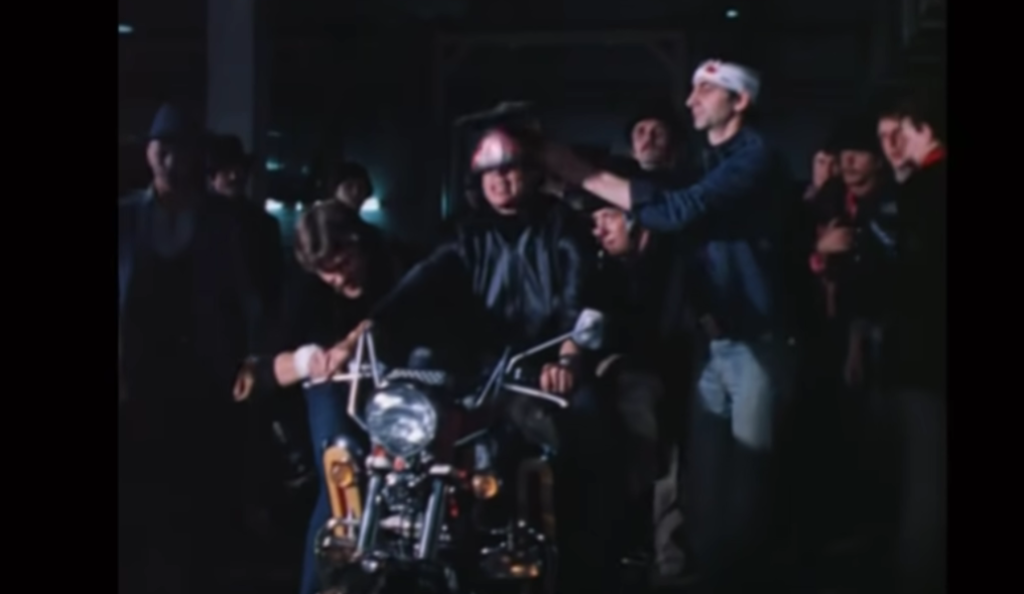
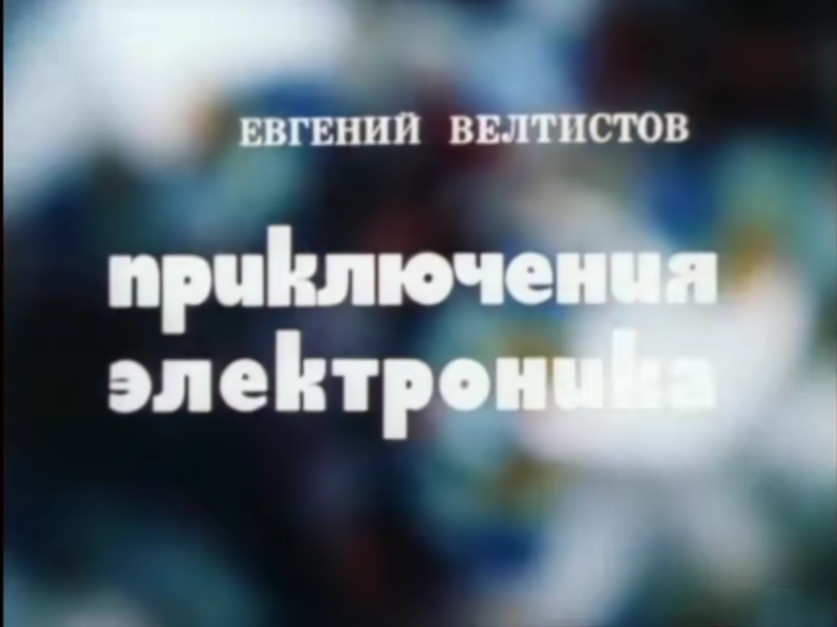
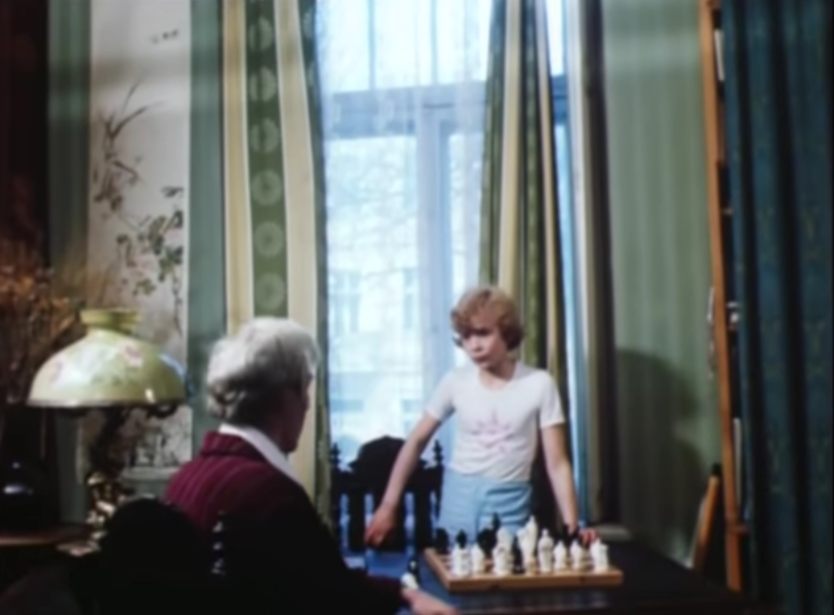
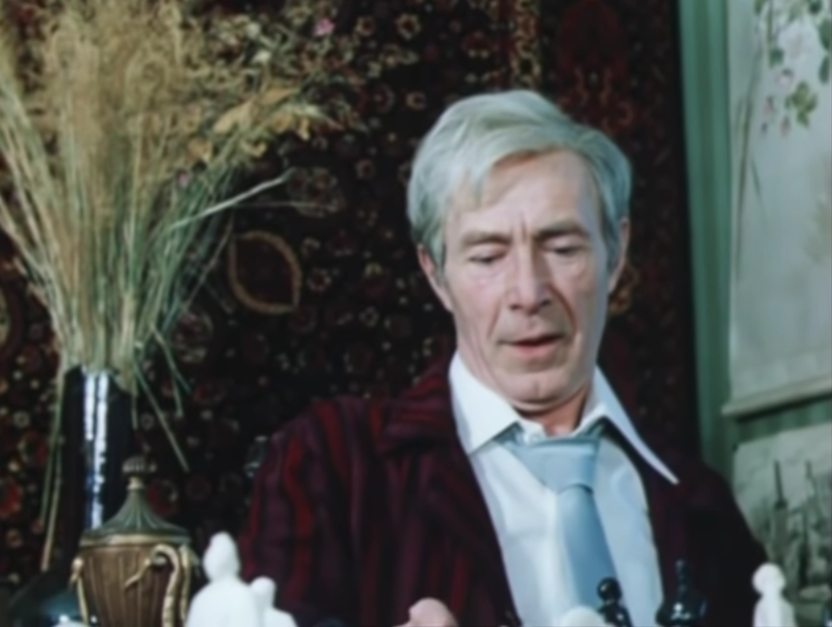

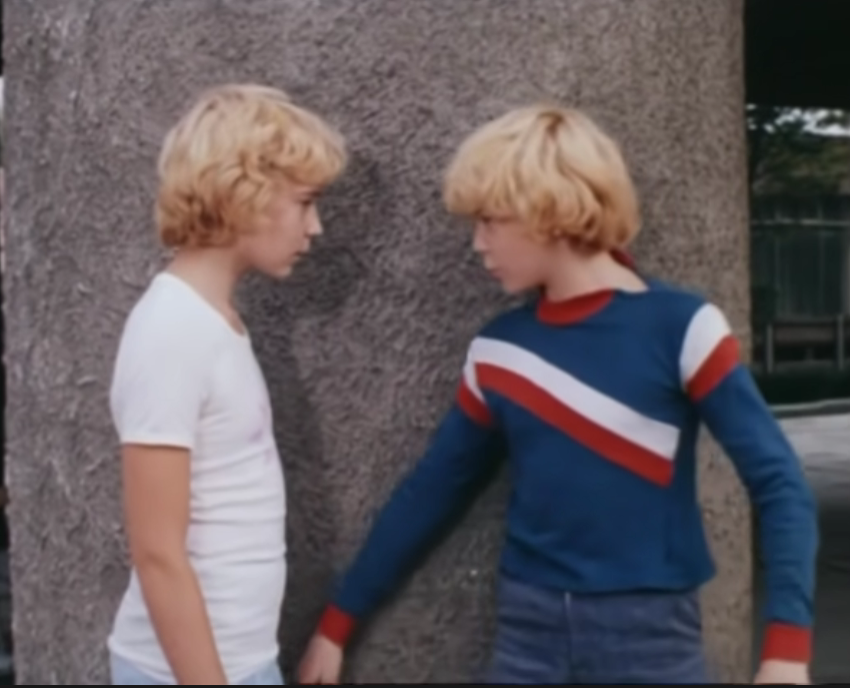
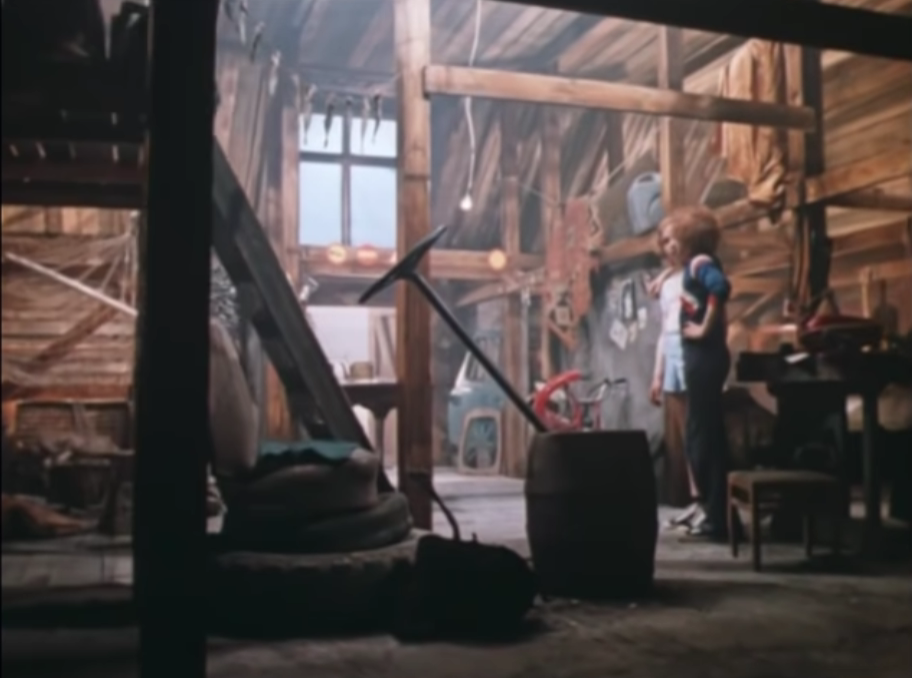
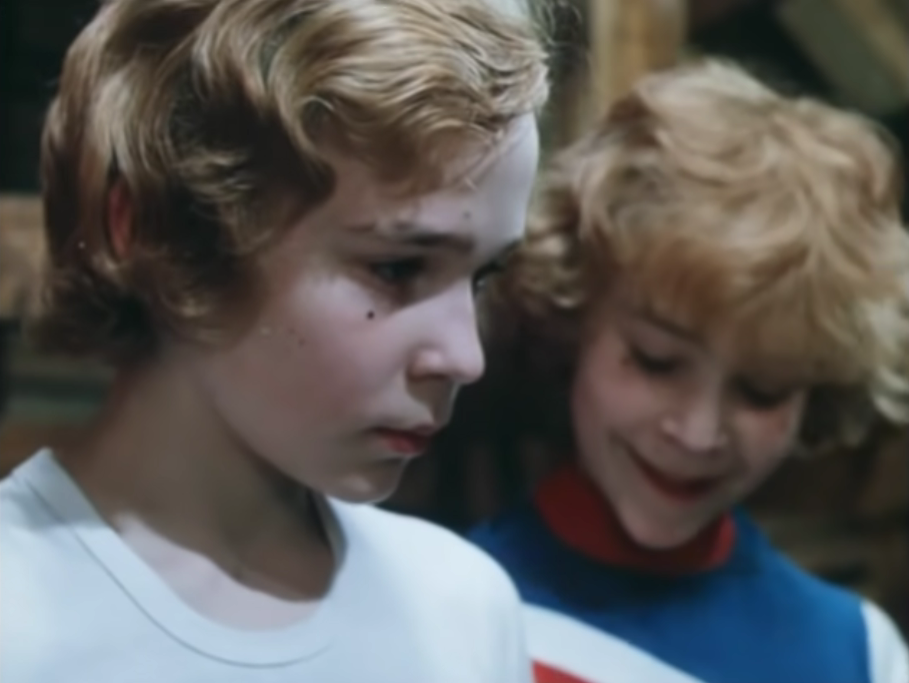
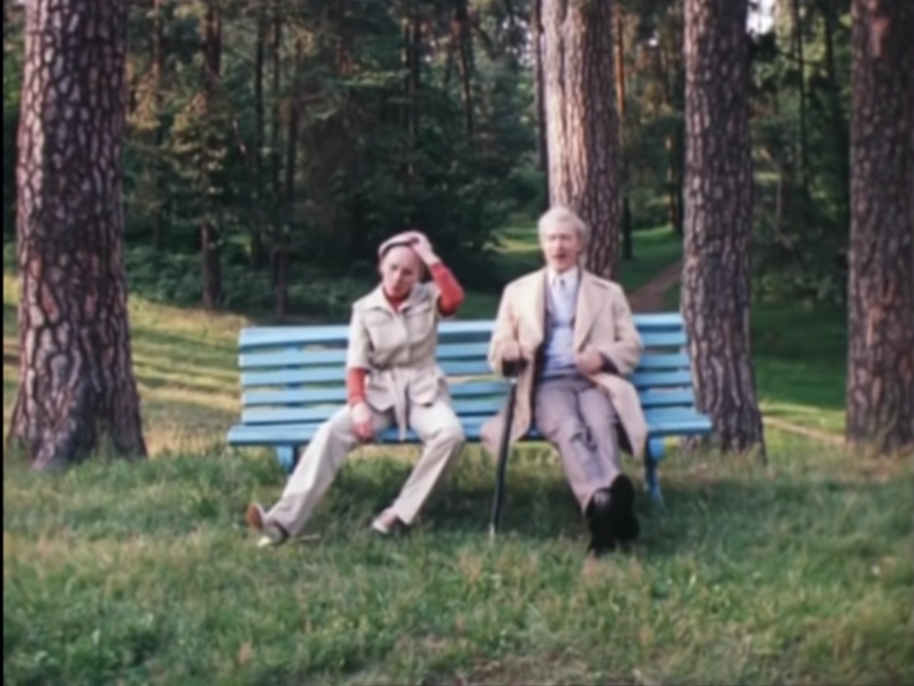
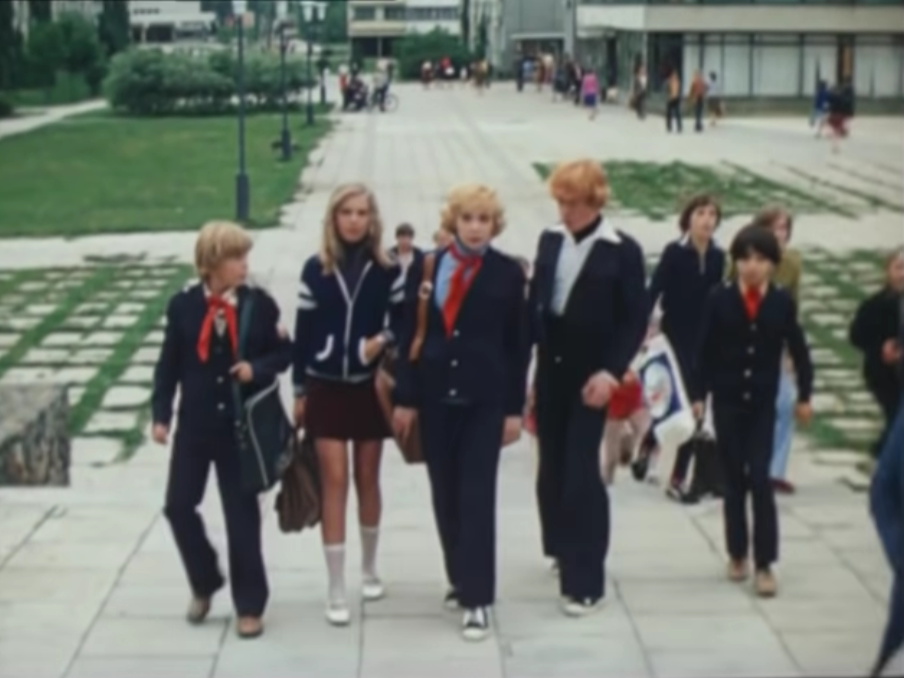
The Adventures of Electronic (1979)
Film review #518
Director: Konstantin Bromberg
SYNOPSIS: Professor Gromov has constructed a life-like robot boy named Electronic, based on the image of a schoolboy named Sergey. Electronic has the dream of becoming a real human boy, and when the Professor forbids him from interacting with the outside world, he escapes and runs into his double. Sergey has the idea of having them swap places, using Electronic’s super intelligence and strength to excel at school. meanwhile a criminal gang is spying on Electronic, with the aim of kidnapping him to use in a series of high-value heists…
THOUGHTS/ANALYSIS: The Adventures of Electronic is a 1979 three-part miniseries from the Soviet union. The story starts off introducing Electronic, a boy who is a robot created by Professsor Gromov to look human, and Sergey the human boy who Electronic’s appearance copies (who appeared on a magazine cover). The two eventually run into each other, and have the idea to swap places, so that Electronic can excel in Sergey’s classes at school, and Electronic is given the chance to live as a human; and naturally, hijinks ensue. The story is fairly obviously a combination of Pinocchio and The Parent Trap, although I’m not sure how accessible either of these were available in the Soviet union in 1979. Nevertheless, the story is simple to follow, and paces itself fairly well, with different things going on across the three different episodes of the series. Being aimed at children, there’s very mild threats and danger, but it’s pretty harmless. The series focuses more on humour, adventure, and the occasional musical number, and I imagine it would have been a fun and entertaining adventure for kids at the time. The story doesn’t really explore the range of potential of it’s set up, and often feels like a re-tread of the aforementioned Pinocchio and The Parent Trap, but you don’t really need to be groundbreaking for these types of films/series. The pacing is pretty solid, the characters develop at an even pace throughout, and there’s new elements added in as it goes along to maintain interest, so it does everything it needs to.
While Sergey and Electronic are up to their shenanigans, an international crime ring has been spying on Professor Gromov and, learning of Electronic’s existence, their boss plans to kidnap him to use his abilities to pull off a huge heist. As mentioned, the villains and danger isn’t too threatening as the series is made for kids, but it adds a little excitement to things. Apart from Sergey and Electronic (played by actual twins, but their voices are dubbed by different people), the rest of the cast play a minor role, but their appearance keep scenes energetic and busy, such as the gang of kids that Sergey and Electronic hang about with, the various teachers, and even a dog that joins the kids eventually. The familiar scenes of the school and the kid’s clubhouse also root the film in a very particular setting that the cast’s adventures revolve around, and makes a nice core along with the characters that interacts with the changing elements of the story, creating a nice balance.
The series was apparently very popular when it was released, and I think it’s easy to see why: it follows some tried-and-tested formulas story-wise, and also it’s produced fairly well, with solid camerawork and performances all round. It’s difficult to find too much wrong with it, since it’s aimed at a younger audience and is not intending to be groundbreaking. Overall, The Adventures of Electronic is an entertaining watch that hits the right notes, but is definitely something that would not stand the test of time, being firmly rooted in the time and place it was filmed. Some elements of the story are fairly timeless, but nothing original is added to make it worth a contemporary viewing.
-
#517 – Italian Spiderman (2007)
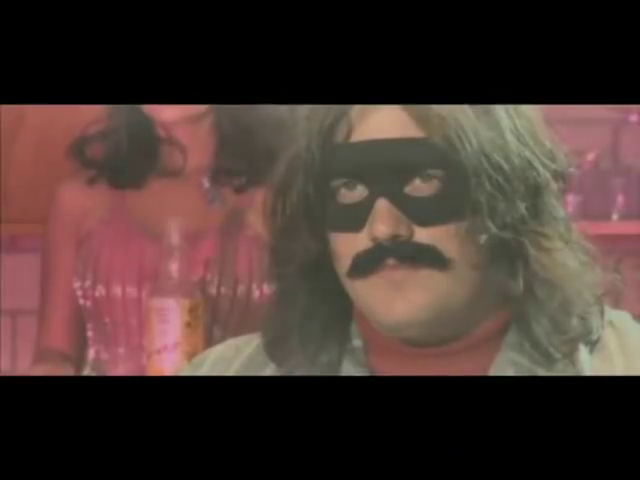
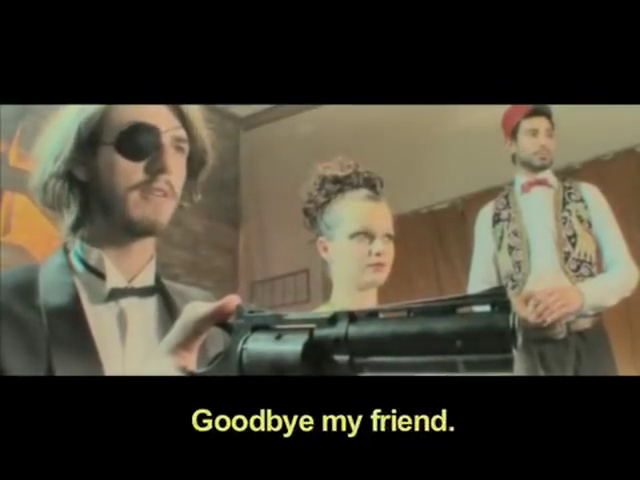
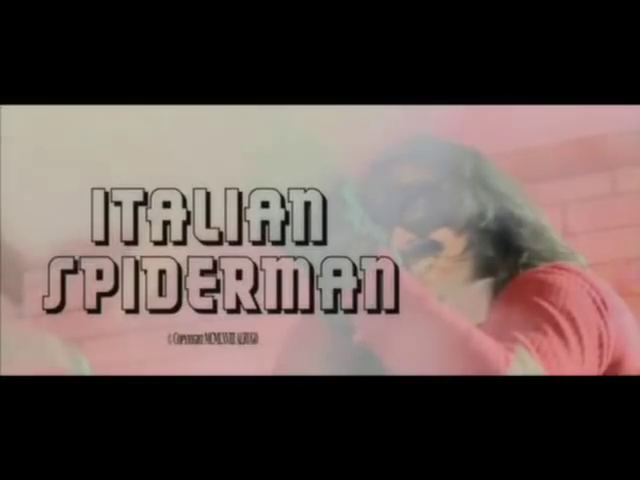
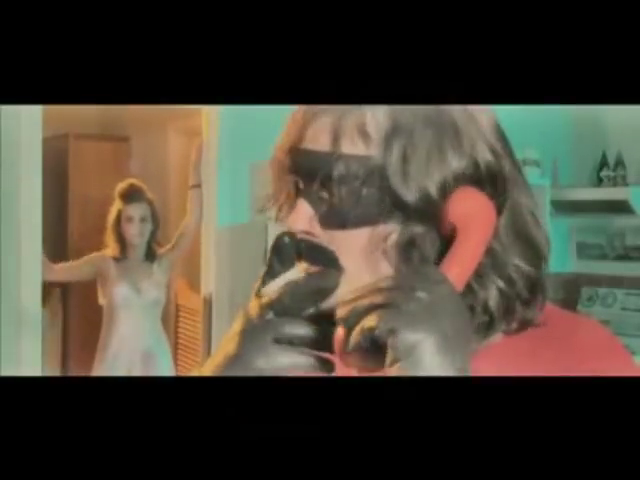
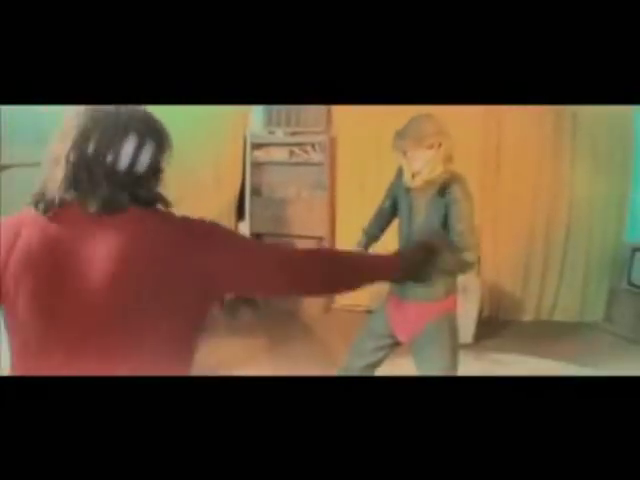
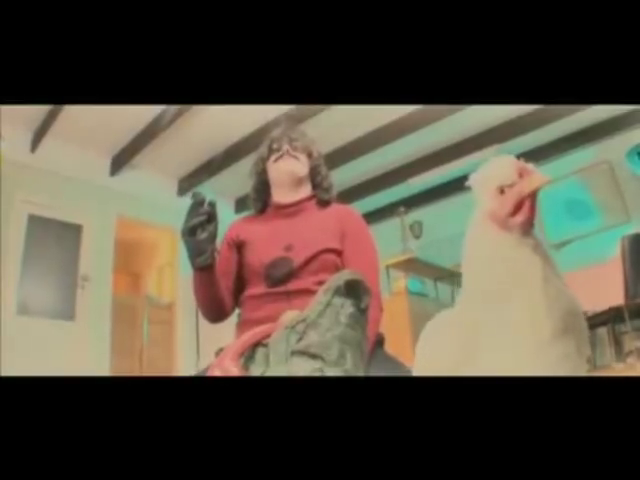
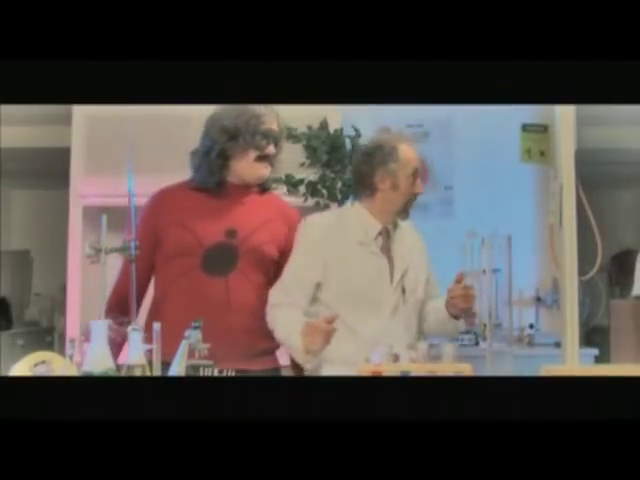
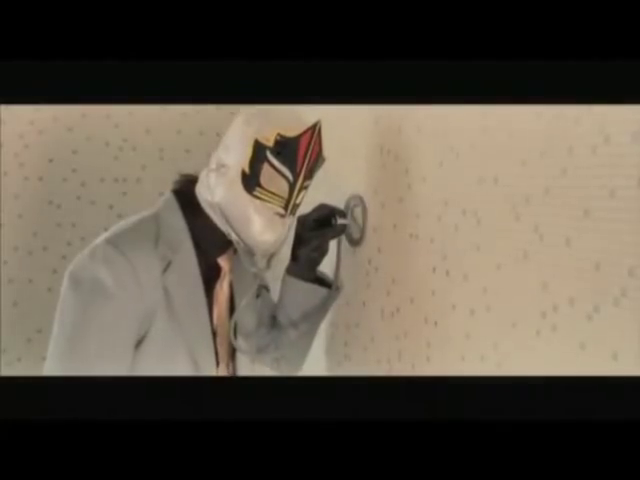
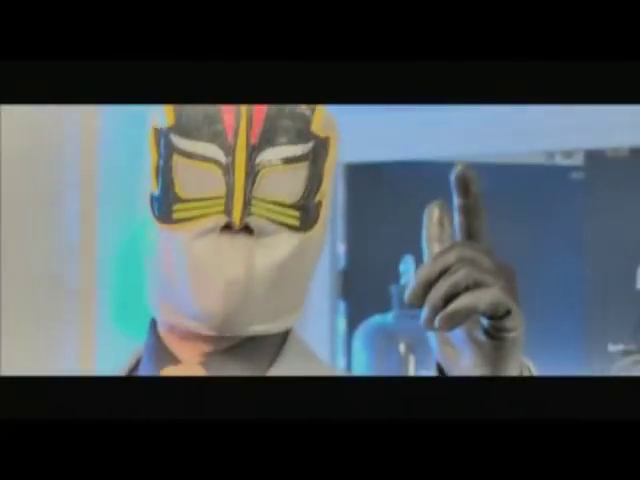
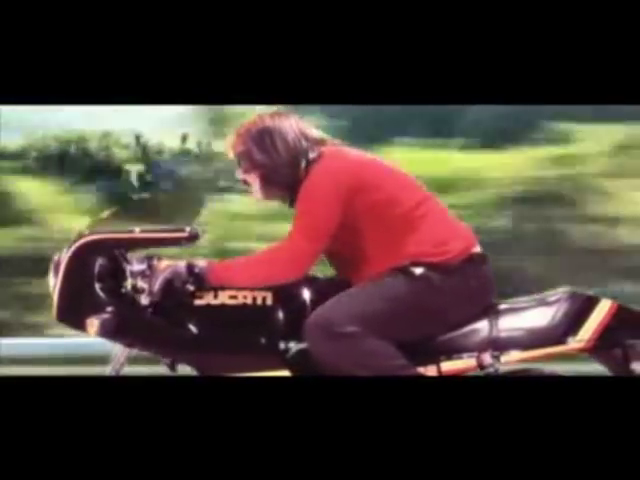
Italian Spiderman (2007)
Film review #517
Director: Dario Russo
SYNOPSIS: When an asteroid that falls to earth turns out to have the power to clone people, it is stolen from Professor Bernardi by Captain Maximum, who wants to use it to create his own personal army. The world’s only hope, Italian Spiderman, sets out to stop Captain Maximum and save the world before it’s too late…
THOUGHTS/ANALYSIS: Italian Spiderman is a 2007 short film, which is a parody of the various knock-offs and copyright-infringing films were made in non-English speaking countries (where the owners of the characters would probably never know the films were made in the pre-internet days). Italian Spiderman is unsurprisingly a parody of Spiderman, and in the opening we see Spiderman playing a poker game and blowing his opponents away with a shotgun, which should give you an idea of how accurate the representation of Spiderman is. The plot of the film concerns an asteroid that falls to Earth and has the power to clone people when exposed to it. This obviously attracts the attention of the evil Captain Maximum, who steals it in order to create an army to take over the world, leaving Italian Spiderman to stop him. The plot would be pretty standard for the type of films it is trying to parody, and leaves scope for all manner of ridiculous setups to occur as Italian Spiderman battles all sorts of traps and villains. Parodying films which are already absurd and ridiculous certainly presents the problem of how you add anything to the original or present it in a different way. Italian Spiderman actually handles this pretty well: it is able to throw in plenty of surprises by adding really ridiculous things out of nowhere, and also throwing just the right amount of self-awareness in to add something new with the parody. With a runtime of just thirty seven minutes, it doesn’t overstay it’s welcome, and accomplishes all it can probably do in that time.
Italian Spiderman (he is never just called “spiderman,” as an example of the aforementioned self-awareness the film has), in keeping with the type of film it is parodying, doesn’t look like the typical spider-man nor does he have any of his powers. The rest of the characters fill typical inconsequential roles that nevertheless keep some semblance of structure in the film. The use of practical effects, combined with the obviously misplaced stock footage, make for some humourous setups. I imagine when this was released online in 2007 it would have been quite popular, at a time where these sort of films were just being discovered by English speaking countries. Nowadays it might have less of an impact because the original films are so easily available and just as silly, but still, Italian Spiderman is a smart parody that balances self-awareness with the original absurdity which makes the films it is parodying so infamous.
-
#514 – The Day of the Triffids (2009)
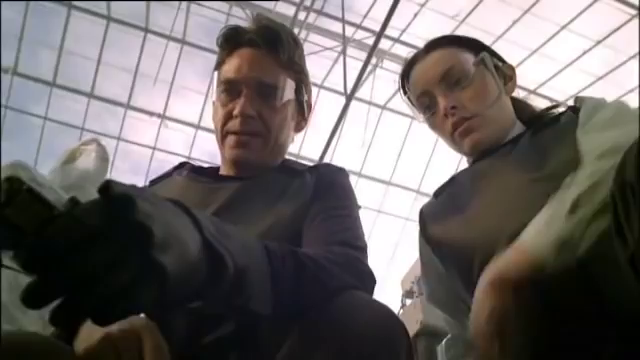
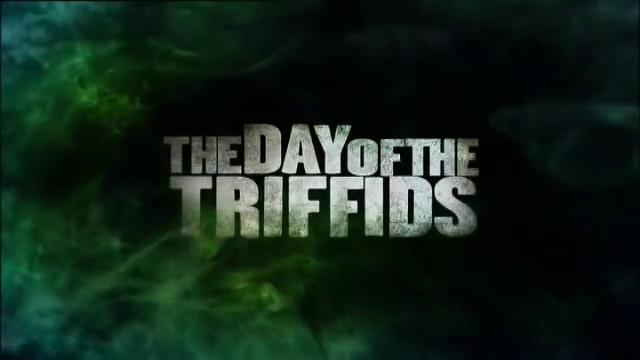
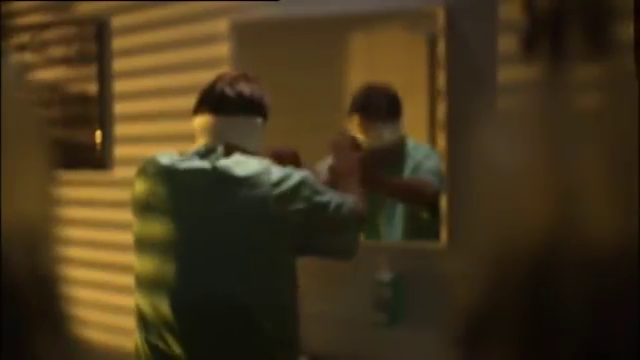
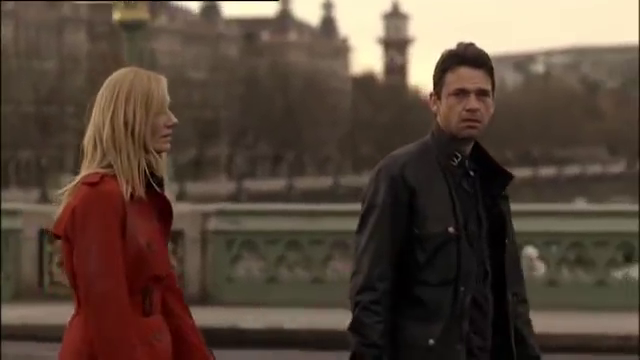
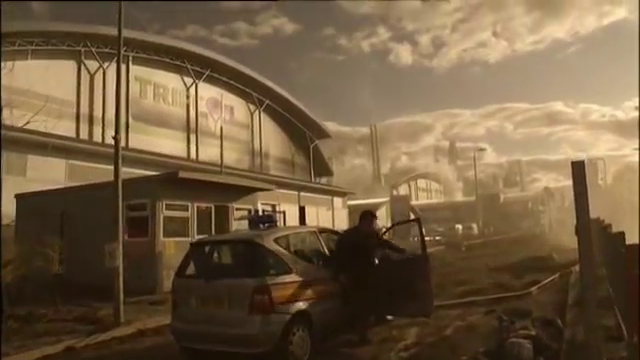

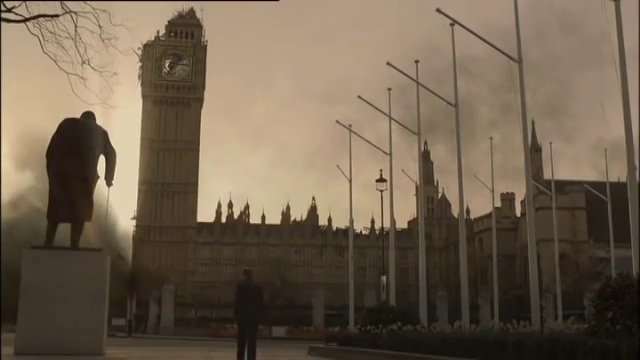
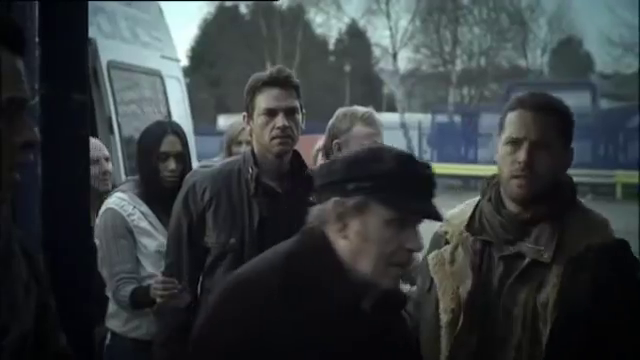
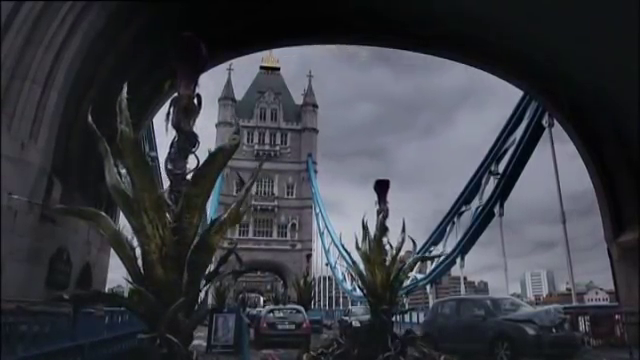
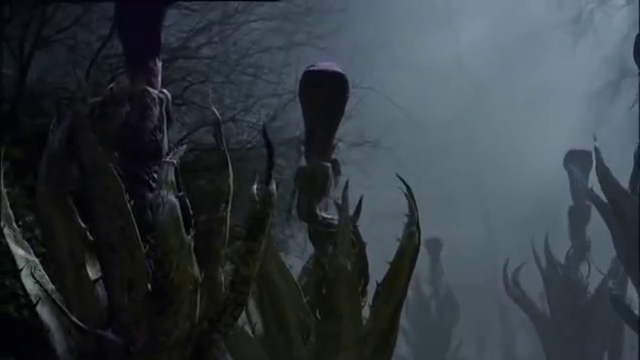
The Day of the Triffids (2009)
Film review #514
Director: Nick Copus
SYNOPSIS: A solar flare visible across the world has the effect of making everyone blind, leading to the collapse of society and government. This also has the consequence of releasing the Triffids, man-eating, mobile, plants into the world after their containment facilities fail. Bill Masen, a scientist who studies the triffids, avoids being blinded by the flare due to having an eye operation, and awakens to find he is one of only a few people still able to see. Bill navigates the remains of civilisation, teaming up with broadcaster Jo Playton to try and survive this new world, and also to stop the triffids from feeding on the sightless population…
THOUGHTS/ANALYSIS: The Day of the Triffids is a 2009 two-part TV series, based on the 1951 novel of the same name by John Wyndham. The plot of the film is updated from it’s origins in the 1950s, making the triffids, a race of man-eating plants that can move, the answer to global warming through the oil they produce as an energy source (the original novel was similar, but didn’t have the global warming angle). Bill Masen, a scientist working with the triffids, is attacked by them and has to have an eye operation to save his sight. Meanwhile, a solar flare that is visible worldwide causes the vast majority of people to lose their sight. Bill, having his eyes bandaged, is one of the fortunate ones, and unwraps his bandages to find society collapsed and everyone around him stumbling around blind. The plot of the series is more closer in many respects to the original novel than the 1962 film, and the changes it makes to bring it up to date fit in well. One of the main issues I have with the story is the unrelated events of the solar flare (meteor shower in the original) and the release of the triffids. Given that both cause blindness, it makes it seem like there is some connection between the two, whereas apparently it is just coincidence. The 1962 suggested a link between the two (that the triffids came to Earth by a meteor), but no such connection here. I’m not sure how convincing it is either that so many people went blind, when apparently you could avoid it simply by having your eyes covered, or being underground (such as Jo in the London underground), surely that would leave a lot more people sighted? Nevertheless, most of the main plot points from the book are there, but slightly tweaked to make a more conventional flowing narrative. The original novel was very much a post-apocalyptic survival story, whereas this adaptation fits the characters and story into more conventional film roles, for example, separating characters into specific scenes and settings, and having an overarching villain. The series flows fine enough, but there’s a point in the middle where things feel a bit without purpose and lost, and has no idea what to do with the characters.
The characters themselves have likewise had a few changes to reflect the more modern setting, and the serial format. Bill Masen is a fairly unremarkable lead, but that’s okay, because the story is more interesting when it focuses on the world rather than the characters. Bill’s character is expanded by introducing a personal relationship with the triffids, due to his parents being researchers that studied triffids, and his Mother being killed by one. It is an element that comes into play more in the latter half of the film when Bill meets his Father, but it all feels very unoriginal. There’s also this strange recurring flashback from when Bill was a child and his eyesight was saved after a triffid attack by a shaman and a mask of some sort, but I didn’t really get the significance of it, and it really only pays off in the final minutes for an insignificant bit. Torrence, played by Eddie Izzard, takes up the villain role, and he is set up as a man who will do whatever it takes to survive (he mostly replaces Beadley from the original novel). His quirky, whimsy personality does feel a bit out of place in a post-apocalyptic setting, and I don’t think the series needs an overarching villain in a world where the world itself is the biggest enemy, along with the triffids, of course. One thing that is consistently evident is that nobody seems to know how to write women and children: Jo is the female lead, but her dialogue and everything she does just feels so ineffectual that it’s almost like she isn’t there for the most part. When the young girl Susan and her sister turn up later on too, their characters just don’t go anywhere or develop a bond with the others. There is a severe lack of coherence and relationship building between the characters which is overlooked in the streamlining of the plot into a two-part series.
Production-wise, the series looks good, with plenty of scenes that show off a ruined London, and plenty of extras that populate the chaotic streets. The triffids themselves are CG monsters that are mostly shown obscured in shadows or partly obscured, but I think that’s probably for the best, as there’s no way to make CG walking plants look completely threatening. There’s a good sense of scale, and some competent production, but The Day of the Triffids has a certain blandness borne from some streamlining elements of the plot to fit the series format, and an inability to write some of the characters to be in anyway significant. It’s watchable, mildly entertaining, but yes…bland.
-
#513 – Where Did All the People Go? (1974)
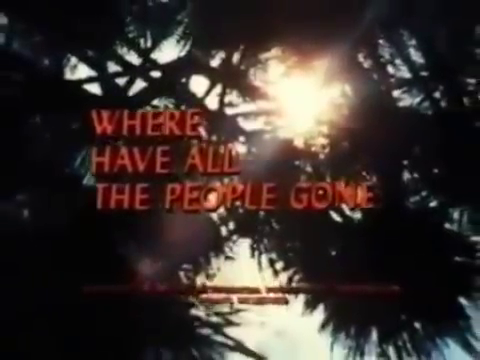
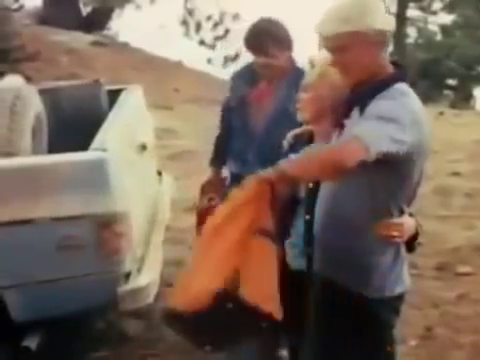
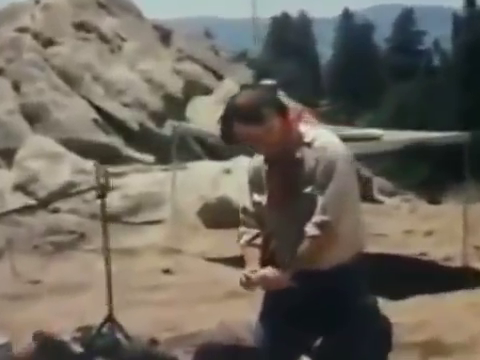
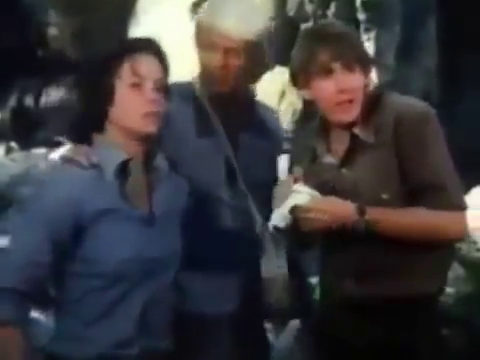
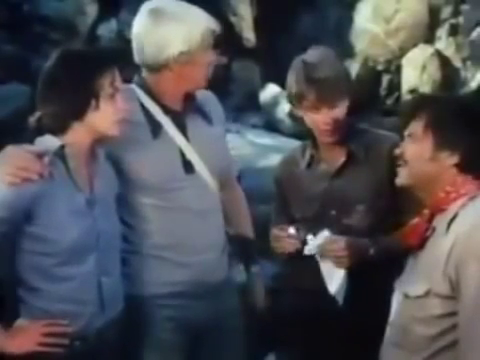
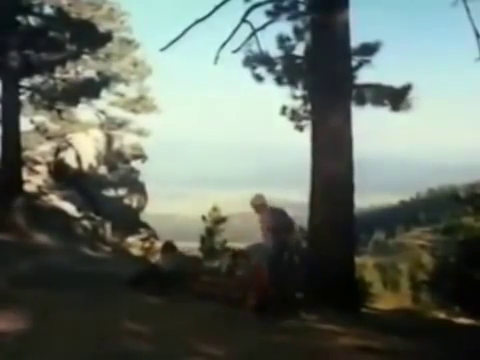
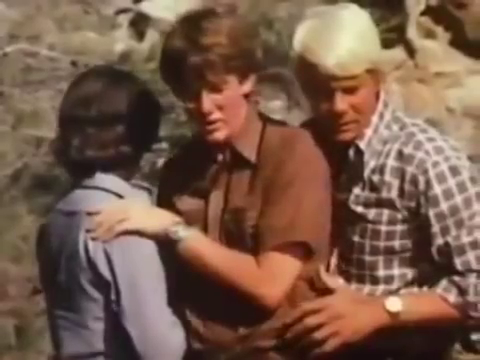
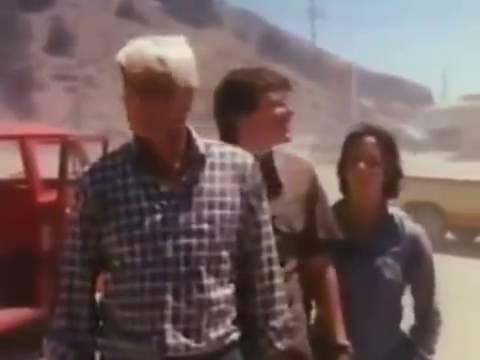
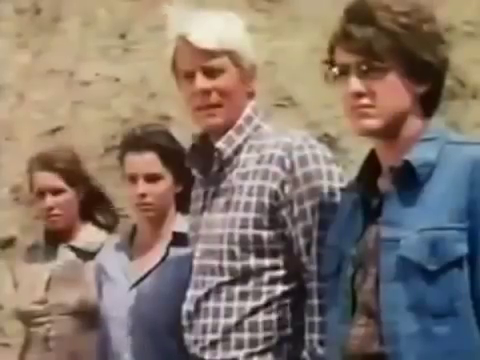
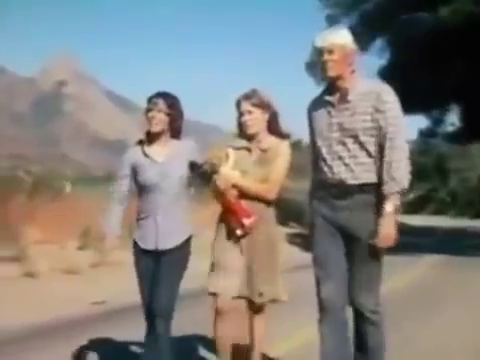
Where Have All the people Gone? (1974)
Film review #513
Director: John Llewellyn Moxey
SYNOPSIS: Steven Anders and his family are enjoying a camping trip in the mountains of California. While Steven’s wife, Barbara, returns home for work, the rest of the family stop and enjoy the remainder of their holiday. While exploring a cave, an earthquake strikes and they head outside to find that some form of solar flare has happened, and they can get no communicate with the outside world. The family head home to try and find Barbara, finding that almost everyone in the world has vanished, leaving only white powder where their bodies once were…
THOUGHTS/ANALYSIS: Where Have All the People Gone? is a 1974 TV movie. The film focuses on Steve Anders and his family, as they are on a camping trip in the Californian mountains. Steve’s wife Barbara has to return home for work reasons, leaving Steve, their two teenage children, and a local farm-hand. The family are down in a cave when an earthquake hits, and they escape to find the farm-hand outside that some form of bright flash happened in the sky at the same time. Unable to get into any contact with anyone, and with the farm-hand suffering what appears to be some form of radiation poisoning, the family try and get back home to Barbara, along the way finding that nearly everyone who saw the flash of light has died and become a heap of white dust. The story is focused around Steve and his family, and the people they pick up and encounter along the way. Initially starting with no answers, they slowly build up theories about what is happening, but their focus is always on getting home to their wife/mother. The film starts off pretty empty, and with characters that are very cookie-cutter and without personality, but slowly, they start to build up some particular responses to what is going on around them, and things start to pay off. The different scenes are a bit hit-and-miss: sometimes they work, sometimes they don’t. As such, the film can feel a bit uneven and disjointed. I don’t think there’s too much original in the film’s portrayal of a world where everyone has disappeared (an idea not unfamiliar to post-apocalyptic films), but it also avoids the common depictions of post-apocalypse scenarios by tuning away from global nuclear fallout and focusing on a family drama. Given that this is a TV movie, which typically focus more on entertainment and action, it is a rare example of such a movie that instead takes its subject matter seriously without the frills.
As mentioned, the characters are very much plain, stereotypical cut-outs, but they do start to grow a little as the film goes on. Steve keeps his family together, while his son David is a science-based person, who unravels a little as the film goes on. Deborah doesn’t really have too much to do other than do some occasional narration (which doesn’t add too much), and the characters of Jenny and Michael, whom the family they pick up along the way, have small, but interesting character arcs that adds something of substance. By the end of the film, there’s some good dialogue and twists that have cohered the characters into a good unit, but they never fully shake off that mould from which they begin.
The open-ended nature of the film leaves us with no real answer about the state of the world and it’s survivors: all we know is about are the characters we travel with, and who they encounter, which says very little. This isn’t necessarily a bad thing, but might not be for everyone who might want the journey to have a more substantive pay-off. When we are given explanations to what is going on, the science seems a bit far-fetched, such as people being turned into white dust being caused by a large solar flare and a particular dominant gene is a bit much the more you think about it. Again, like most things in this film, if you don’t think too much about it and focus on the characters and the depiction of the post-apocalyptic world, you have something that is mildly interesting to watch, if you give it a chance to get going. It’s nothing mindblowing or groundbreaking, but there’s some competency at work that brings the film together. In terms of TV movies, you can do worse, but you can certainly do better.

